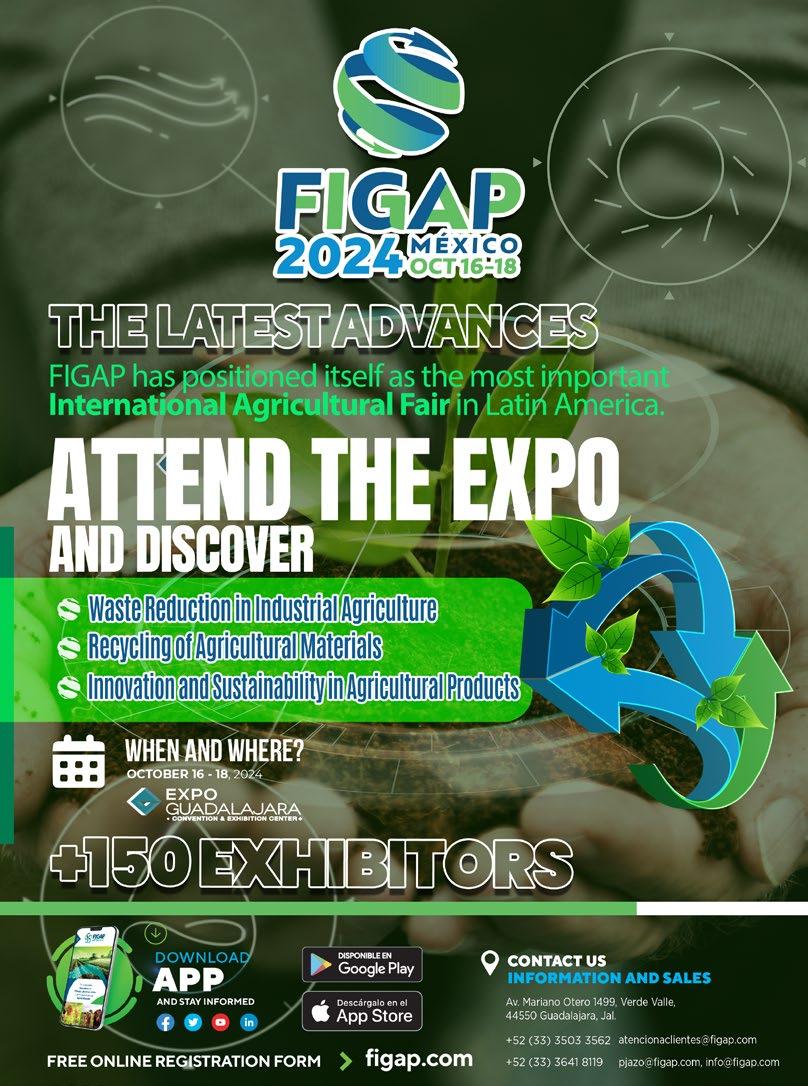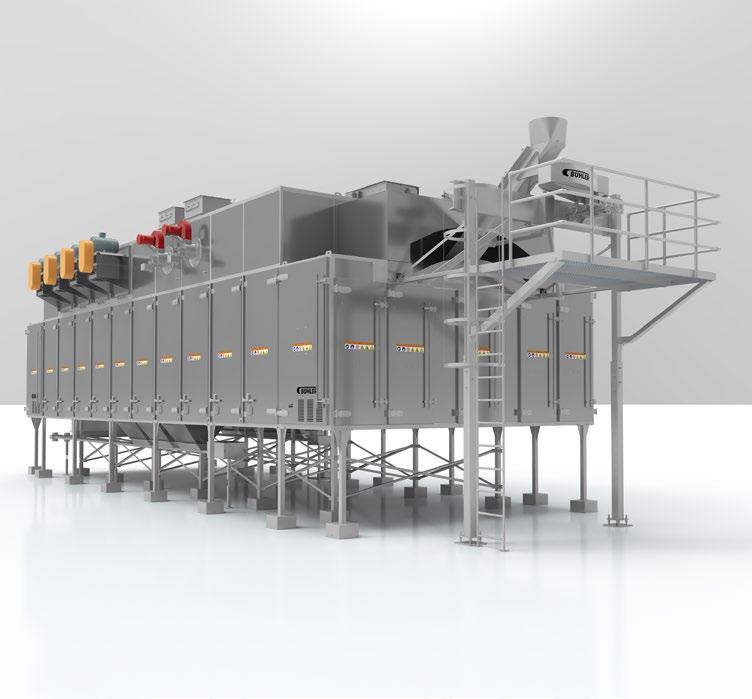INTERNATIONAL MAGAZINE ABOUT THE PET FOOD INDUSTRY

REDUCE, RECYCLE, AND REUSE IN THE PET FOOD MARKET
THE THREE RS IN THE PET WORLD
SOCIAL RESPONSIBILITY: ITS IMPORTANCE IN THE PET FOOD INDUSTRY


INTERNATIONAL MAGAZINE ABOUT THE PET FOOD INDUSTRY

REDUCE, RECYCLE, AND REUSE IN THE PET FOOD MARKET
THE THREE RS IN THE PET WORLD
SOCIAL RESPONSIBILITY: ITS IMPORTANCE IN THE PET FOOD INDUSTRY

With Wenger, you make products that pets love to eat.
Through careful testing and extensive research, our world-class team helps you develop premium foods and treats, and the processes to produce them at scale. Pet food producers globally trust Wenger for extrusion cooking and drying solutions to satisfy healthy pets everywhere.
See what Wenger can do for your business.
All Pet Food
Alvear 44, Chacabuco Provincia Buenos Aires–Argentina info@allpetfood.net
Editorial Team
Maria Candelaria Carbajo
Delfina Rojas
Victorina Manes
Laureano Cane
Ludmila Barbi Trindade
Erika Stasieniuk
Candela Bonaura
Armando Enriquez de la Fuente Blanquet
Juan Manuel Peralta
Luis Miguel Gómez Osorio
Juan Gómez-Basauri
Iván Franco
CEO Pablo Porcel de Peralta pablo.porcel@allpetfood.net
Sales Manager Iván Marquetti ivan.marquetti@allpetfood.net
Customer Intelligence Analyst
Julia Cruz Díaz julia.cruzdiaz@allpetfood.net
Editorial Leader / Admin Victorina Manes victorina.manes@allpetfood.net
Magazine Editor Leader
María Candelaria Carbajo candelaria.carbajo@allpetfood.net
Editorial Translator Delfina Rojas delfina.rojas@allpetfood.net
Event Leader
Micaela Poltrone micaela.poltrone@allpetfood.net
Community Manager
Josefina Poy josefina.poy@allpetfood.net
Brand Estrategist – UX UI Laureano Cane laureano.cane@allpetfood.net
Multimedia Design
Juliana Di Palma juliana.dipalma@allpetfood.net
Software Development Matías Schettino
Our Community Web: www.allpetfood.net
Linkedin: bit.ly/3xOBkEt
Youtube: bit.ly/3izL0Hn
bit.ly/3lUV6Z7
© Copyright 2020 ALL PET FOOD All rights reserved. No part of this publication may be reproduced in any form or by any means without the prior permission of the copyright owner. More information can be found at www. pcm-group.net ISSN 1464-0058

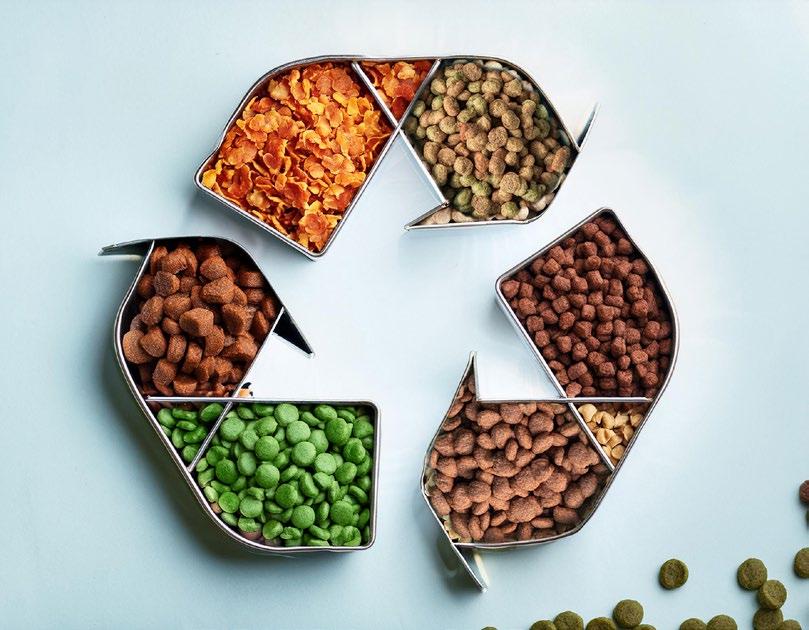
Dear readers,
It is a pleasure to share a new edition of our magazine dedicated to pet care, nutrition, and development. We are increasingly certain that, in a world where news and new demands emerge minute by minute, it is crucial that we, the actors and producers of the industry, are informed and make decisions based on the latest evidence and our experience.
In this edition, we have decided to focus on the 3Rs concept: recycle, reduce, and reuse, to continue deepening and sharing knowledge and good practices about the production process of our industry and sustainability because each stage, from obtaining raw materials to the packaged product, has an impact on the ecosystem. Whether it is good, neutral, or negative depends on us.
On this occasion, we have articles from guest editors and companies in the sector who, thanks to their knowledge, lead us to learn more about the reuse of safe food, the importance of social responsibility in the industry, and plant and sustainable alternatives to replace nutrients. Furthermore, we have had the privilege of talking and capturing it in an interview with Scott Krebs, president of Wenger Group.
We are eager to meet at the next edition of CIPAL with all the attendees, exhibitors, speakers, and collaborators who have decided to join this experience to exchange knowledge and continue developing our industry.
Thank you for being part of our family! We hope you enjoy this edition as much as we enjoyed preparing it!
Editorial team


















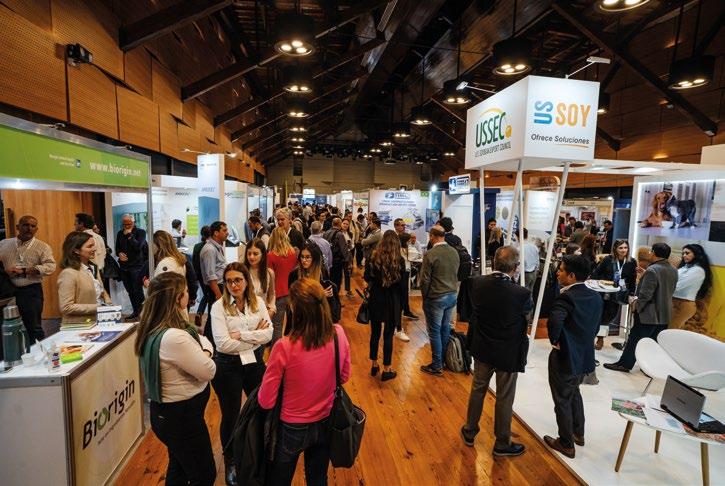




In a world where reducing, recycling and reusing is more important than ever, CPM’s Carousel Dryer/Cooler by Idah offers a solution to the petfood industry.
By CPM
In the carousel dryer, product enters through a rotary valve onto the revolving trays. The Carousel system ensures a first in, first out (FIFO) principle, after nearly one revolution, the product is gently discharged and mixed into the next lower tray. This process is repeated until the product drops from the last tray into the outlet where a rotary valve prevents air leakage. The revolution means that the product undergoes the same treatment all along the decks, ensuring that the product comes out in uniformed moisture. Furthermore, the multiple tumbling action gives an efficient heat exchange with the air, resulting in a low dryer exhaust air temperature.
The Carousel technology is a unique solution for both energy efficiency and precise moisture control. Optimal moisture control is made easy by using carousel technology in both the dryer and cooler. Additionally, the exhaust air from the cooler can be directed as make-up air for drying process. Therefore, an integration of the dryer and cooler into one compact
machine with a FIFO discharge principle like the carousel dryer will give an outstanding moisture control performance.
Ambient air cools the product and after filtered and heated it is used as drying air for the upper section. This carousel model offers many benefits features when compared to traditional equipment.
Managing the temperature and moisture content of the finished product is the main task for the drying and cooling process. However, when the feed is overdried, it causes material loss as well as extra energy consumption. When the feed is too wet, the product will have a higher risk of quality degradation and mold growth.
Due to its unique working principle, all the products in this carousel dryer will get the same heat treatment and retention time. This is combined with a unique and easy control system, along with a real-time monitoring and modification of the drying parameters. The carousel dryer will give a uniform and constant moisture level that is easier to achieve the target average moisture that will save energy and raw materials.
The drying and cooling process accounts for a significant part of the overall energy consumption. Rising energy costs and sustainability awareness regarding energy consumption have driven feed manufacturers to request further support to improve their drying and cooling functions. To maximize energy efficiency, we have to look into:
• Maximizing the use of warm product energy.
• Minimizing the amount of water evaporation.
• Minimizing energy loss with the exhaust air.
By using the cooling air as makeup air into the dryer, the heat energy can be reused. Also, efficient heat exchange lowers the amount of exhaust air. Low exhaust air volumes will reduce the cost needed for odor treatment.
While upgrading the production capacity of a feed mill or improving the production process, the introduction of new equipment into the facility is required and space limitations may arise. The carousel dryer is already more compact than a typical dryer.
A direct result of using cooling air as makeup air for the dryer is savings. If you assume that the temperature differential between the ambient and cooler exhaust air is 25°C, you save up to 30 kg/t steam. At the same time, you will reduce the amount of exhaust air by 50%, reducing odor treatment cost significantly.
Getting better moisture control, for example 0.5%, is saving not only about 10 kg/t steam consumption in the dryer but, even more important, saving 0.5% raw materials cost and having a 0.5% higher output capacity.
For more information, contact Idah@cpm.net















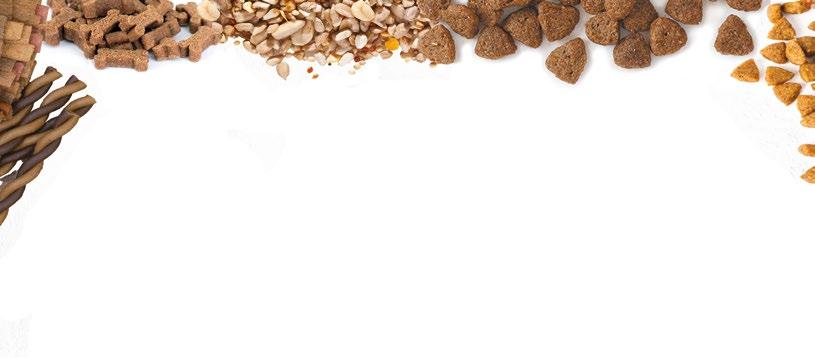
By All Pet Food

Greenwashing is a practice that, unfortunately, exists and has grown since sustainability became an essential factor when making purchasing decisions, and does not discriminate against industries or markets. Although more and more companies are implementing practices and changes to be more sustainable, it is also true that some get carried away by what attracts today’s consumers and promise or shout more than they implement, although it is not always intentional. Sometimes, these bad practices happen from poor communication or lack of accurate information between business processes and actions and marketing or advertising teams. Therefore, it is important to know what greenwashing is and how to identify it to avoid it, both as producers and consumers.

Consumer demand and the evolution of legislation about environmental impact, waste, and pollution have meant that the pet industry is adopting and seeking more and more sustainable packaging alternatives and production processes. In recent years, reducing, reusing, and recycling has become a priority for both pet owners and those companies in charge of meeting their needs.
We already know that the main function of packaging, in addition to making it possible to divide and transport products, is to protect the useful life and conditions of the food or various products it contains, and that is why, as we cannot do without its use, we must seek and adopt the best materials and processes to try to take care of the negative impact on the ecosystem and society that our choices produce.
The English concept of greenwashing combines two words: green and washing, referring to what means a “greenwashing” of a company reputation, in which unsustainable actions are hidden or disguised, intentionally or not (or not as sustainable as proclaimed) under the motto of sustainability and ecologically responsible actions to clean, improve or change its positioning.
In 2023, the analysis company Kantar published the Sustainability Sector Index 2023, a global study about consumer sustainability concerns and behaviors, where it states that more than half of respondents believe that brands, regardless of their industry, are misleading and unclear when reporting on their sustainability actions. Greenwashing can generate false impressions or provide misleading information about the benefits and environmental care of a product, service, or company through exaggerating actions related to environmental care, using ambiguous language, or emphasizing achievements while ignoring negative impacts, for example.
Of course, social media is one of the places where greenwashing is most common. Fake news volume or reproduction of information from third parties that travel through digital platforms makes it very difficult for messages not to be distorted, not to mention that, unfortunately, some people or companies use them to influence in a minor way.
• As producers, pet food manufacturers, or distributors, it is natural that we want to attract consumers to our products, and that is why it is essential to know our processes very well and how to avoid communicating them and falling into greenwashing. Here, we share some tips:
• Knowing the product and its components very well: Production companies must ensure their design and marketing teams know well what processes, changes
or transformations must be communicated about environmental, social, and health care to communicate the impact (both positive and negative) of their decisions and movements. To avoid greenwashing, it is essential to communicate information with precise and clear statements, understandable to all potential consumers, based on verifiable and updated evidence, that contemplate and tell the complete story of the product.
• Being transparent: with the conditions or warnings, if any, about uses or claims of the products or their components.
The English concept of greenwashing combines two words: green and washing, referring to what means a “greenwashing” of a company reputation, in which unsustainable actions are hidden or disguised, intentionally or not (or not as sustainable as proclaimed) under the motto of sustainability and ecologically responsible actions to clean, improve or change its positioning.
• Not exaggerating: the environmental impact, or declaring anything false, explicitly or implicitly.
• Clearing durability and disposability: This kind of information and procedures should be clarified and labeled if applicable. For example, some companies claim that their products are biodegradable, but they are partially misleading their consumers because they do not decompose within a reasonable period.
• Giving access to more information: through QR codes, direct links to website sections, and the like.
• Keeping your word: One of the keys to avoiding greenwashing is just doing what you say, not only to avoid falling into these unethical practices but also to avoid losing trust and creating a gap between actions and goals.
• Informing, even if there is little to communicate: The absence of communication is not the best for a brand. Different surveys show that more than half of the consumers surveyed consider it very difficult to know which products are good or bad from an ethical or environmental point of view, due to a lack of information. If they do not clearly understand how a company or product contributes to ecological and social care, we are not helping them make information-based decisions.
• Being careful with empty messages: Saying a lot while saying nothing is a wrong strategy. The worst thing that can happen to us as a company is not being reliable, because consumers will lose trust in the brand, judging it as dishonest.
Nowadays, trust in brands is mainly based on three principles: integrity, identification, and inclusion. When consumers buy products with claims that later turn out to be false, they become disillusioned and lose trust not only in that specific brand but in the entire industry as well. That is why it is so important to take care of the ethics and image of the market all together. And although regulation grows every day throughout the world, we must still encourage and appeal to workers’ ethics and morals, because, in most countries, there are still no specific regulations or penalties for these practices when misused
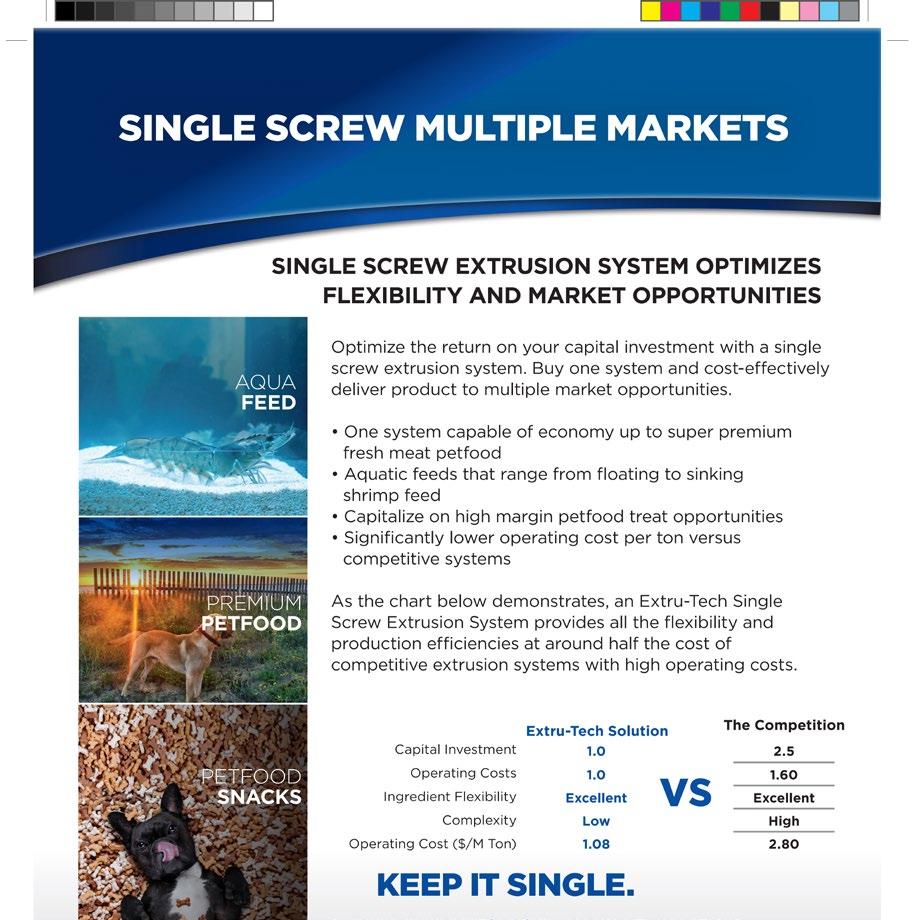



We’re transitioning to the Coperion brand, bringing you more resources and unmatched technologies – from industry experts who have made our solutions perform the best for your processes.
It’s a combined team with the knowledge and experience to help you define what comes next. Together, we’re shaping what matters for tomorrow.



Contact us:
e : info.fpm@coperion.com
w : coperion.com/fpm
w : coperion.com

Choline is an essential nutrient for cellular structure and metabolism, a precursor of phosphatidylcholine and lecithin. In addition, it plays a fundamental role in lipid metabolism, especially in the liver. It is a lipotropic factor since it prevents the abnormal accumulation of fatty acids in the hepatic tissue, averting hepatic lipidosis (Bertechini, 2004).
By Erika Stasieniuk and Ludmila Barbi
Choline, also known as vitamin B4, is found in all ingredients used in the formulation of dog and cat foods, with greater availability in animal products, mainly in poultry by-product flour.
The classification of choline as a B-complex vitamin is controversial, as it does not behave as a coenzyme in metabolism and is required in higher amounts than other B-complex vitamins (Bertechini, 2013). Reis et al. (2012) highlight that, unlike other B-group vitamins, choline can be synthesized in animal livers because of serine amino acid in the presence of folic acid and vitamin B6. Due to its organic function, choline does not strictly fit the definition of a vitamin and could be considered an essential amino acid (Bertechini, 2013).
Nutritional recommendations of choline in dogs range from 1,640 to 1,890 g/1,000 g of dry matter. In cats, vary from 2,400
to 3,200 g/1,000 g of dry matter, depending on the animal life stage and energy maintenance needs according to FEDIAF (2021).
These recommendations are partially fulfilled with ingredients used in animal formulation. However, depending on the amount of animal ingredients, it can be necessary to supplement it with choline chloride. This compound salt is produced by chemical synthesis and is widely used in the pet food industry.
According to Leeson and Summers (2001), Combs Jr. (2008), and Ruts (2008), the powder form of choline chloride is extremely hygroscopic and can hasten the deterioration of other vitamins upon contact. On the other hand, the liquid form is highly corrosive and requires specialized equipment for handling and storage (Mcdowell, 2000). These characteristics make the handling of choline chloride in the
feed mill or premix challenging, which can compromise the premixing with other microingredients and result in the loss of vitamins (Mallo and Paolella, 2017).
Naturally, choline is found in foods as phosphatidylcholine. This substance is made of esterified fatty acids and the choline itself. In agreement with Leeson & Summers (2001), Combs Jr. (2008), and Rutz (2008), less than 10% of choline in food is in free form or as sphingomyelin, which are analogs of phosphatidylcholine containing sphingosine instead of fatty acids.
In plants, it is found in phosphatidylcholine, free choline, and sphingomyelin forms. Nowadays, there are natural products that come from plants with a high content of choline in esterified form providing a high bioavailability, which can be an important alternative to the use of synthetic choline chloride.
One of these alternatives to the choline, called vegetable biocholine, is derived from vegetable extracts of the following plants: Trachyspermum ammi, Citrullus colocynthis, Achyranthes aspera, Azadirachta indica, Acacia nilotica, Silybum marianum, Andrographis paniculata, and Ocimum sanctum. It is worth mentioning that the composition of commercial vegetable biocholines available on the market may vary among suppliers.
The lower hygroscopicity of vegetable biocholine is positive as it reduces water-soluble vitamins in premixes compared to choline chloride. This is due to the reduced free water content in the mixture, resulting in a lower potential reactive. Moreover, excess water can cause operating problems in dog and cat feed mills.
Although there is limited research on pets, vegetable biocholine has been successfully used in broiled chicken and laying hens, demonstrating positive results in feed conversion, manufacturing, and egg weight (Chen, 2007; Calderano, 2015).
Three diets were evaluated in 40 Beagle dogs in a study conducted by Mallo and Paolella (2017): the first includes an herbal source of choline, the second with choline chloride, and the third as a negative control diet. Results demonstrated no significant differences in dog’s preference for diets in quality and quantity of feces, or blood protein profile. However, compared to negative control diets, a reduction of triglyceride levels and HDL was observed in choline-supplemented diets.
Mendoza-Martinez et al. (2022) conducted a study with the following treatments: non-supplemented diets (377 mg choline/kg), choline chloride (3,850 mg/kg equal to 2,000 mg choline/kg diet), and vegetable biocholine (200, 400, and 800 mg/kg) for 60 days. Both sources of choline indicated similar responses, but vegetable biocholine demonstrated additional properties, such as prevention of cardiovascular and metabolic diseases, cancer prevention, and inflammatory and immune response. Moreover, it affects the behavior and cognitive processes of dogs.
Nascimiento et al. (2022) concluded that vegetable biocholine could replace choline chloride in canine nutrition, as it does not damage lipid metabolism and other functions of the organism. On the contrary, there was an improvement in other functions, especially due to the significant reduction of liver enzymes, total cholesterol, and triglyceride.
Are you searching for top-tier industrial equipment that stands out in both quality and innovation?
Our cutting-edge machinery, proudly manufactured in Brazil, is here to elevate your production to new heights.
Brazilian-made equipment Expert technical support across Latin America Extensive installed base in the region

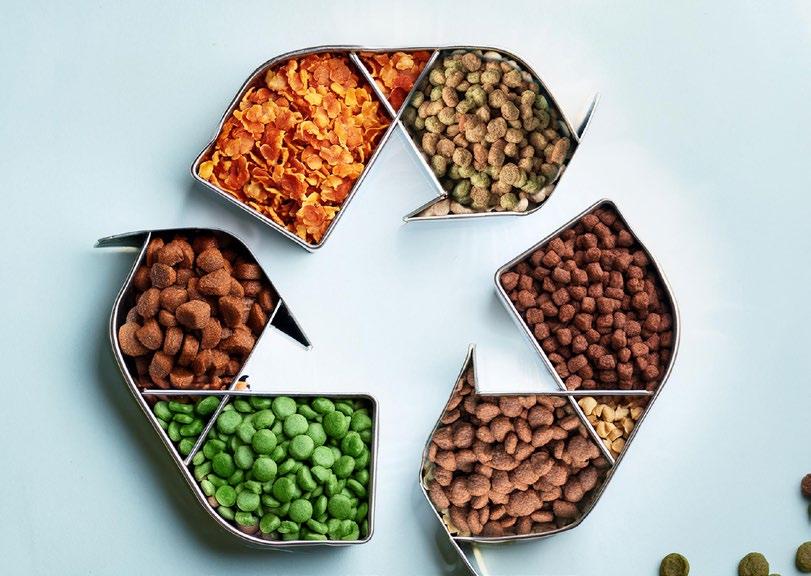
The use of the “Reduce, Recycle, Reuse” (three Rs) principle in the pet’s industry can be a responsible and sustainable way to carry out their dietary needs.
By MVZ. Armando Enríquez de la Fuente Blanquet
I will share some ideas about how to carry out these principles:
As with human feed, it is important to reduce the pet food waste. This means to reduce the necessary amount of food for your pet and to avoid the excess of food that can be throwed away.
Recently, I found an interesting article about how some ideas contribute to the reduction of waste. The Al-powered dog food vending machine company from Finland release an
innovative technology: a dog food vending machine. It resembles a doghouse, and it is designed as a pilot project for Hau-Hau Champion quest, owned by VAFO Group, to reduce dog food waste.
Regularly, there are multiple reasons to buy a pet food bag. If the purchase food does not please your dog, it often means that nearly a full bag of pet food is throwed away. The working mechanism of the vending machine is based on an artificial intelligence (AI) video recognition software. The machine identifies the approaching dog and drops kibbles into the bowl so that the “client” tastes the product. Once the machine sees the leaving dog, it automatically disinfects the bowl using UV
light and it is ready to serve its next “client”. As one of their executives says, in this way dogs have the chance to taste the food before, which helps to reduce the pet food waste in the future.
For some pet parents, preparing home-made diets with fresh and natural ingredients can reduce reliance on processed and packaged foods and control wasting from the packaging. Additionally, you control food quality and reduce waste.
Regarding to pet food manufacturing, “reduce” means to take precautionary measures. One way to reduce waste during pet food production is to optimize the processes to minimize the waste, including the efficient use of ingredients, the optimization of recipes to reduce unused byproducts, and the efficient management of the supply chain to minimize excess inventory. Choosing sustainable ingredients in pet food production is essential to reduce the impact the industry has on the environment,
Choosing sustainable and local ingredients ethically produced in pet food production is essential to reduce the impact the industry has on the environment. It is also important to adopt sustainable fishing and agriculture practices for some ingredients, such as fish and cereals.
Setting up an effective wasting management, such as composting organic waste and recycling packing materials, helps to reduce the environmental impact of the pet food production and promotes sustainability in the supply chain.
Pet food manufacturers adopted sustainable packing practices, for example, the use of recycled, biodegradable or compostable materials to minimize their impact on the environment; most of them are in containers that can be recycled. Be sure to properly fulfill the recycling requirements in your city. In addition, many companies are using more
sustainable packaging, such as recyclable or biodegradables ones, which may also be an option to consider. Circular solutions are fundamental. Consumers are having a great interest in recycling, even in the recycled content, as the 50% consumers aged 44 years inform to have bought a product according to the packaging content.
In terms of production, pet food industry contributes to the recycling of ingredients and byproducts. In pet food production, many byproducts for human consumption can be recycled and used as ingredients. For example, meat byproducts and vegetables which do not fulfill quality requirements for human consumption can be processed and used in pet food production, reducing waste.
You can use food waste if it is safe for your pet health. For example, chicken or lean meat can be added to your dog diet, if they are free of damaging seasoning or ingredients. To do that, it is important to investigate which food are safe and which are toxic.
According to the industry, the reuse of pet production resources implies the efficient use of energy, water, and natural resources. This includes technology application and procedures that minimize energy and water consumption in the production facilities as well as the use of renewable energy and conservation practices.
To summarize, the application of the three Rs principle (reduce, recycle, and reuse) in pet food production means to take measures to reduce waste, recycle and reuse resources, and adopt sustainable procedures in each part of the production process. This not only benefits the environment, but also promotes health and well-being to pets and their owners.


Many concepts can be linked to the three Rs principle: ecology, animal protection, and research, among others. Let’s take a look at some of them!
By Dra. M. Candela Bonaura
The three Rs rule, also known as the three Rs of ecology or simply as 3R, is a proposal for consumption habits (reduce, reuse, recycle) popularized by the environmental organization Greenpeace, which aims to develop habits, such as responsible consumption. More than 8 million tonnes of plastic end up in the ocean every year.
In the last few years, there has been raising awareness and a great interest in our impact on the planet, emerging a work around sustainability and circular economy.
Sustainability represents a way to live in balance with our environment and to prevent the lack of resources from threatening lives. The circular economy is a model of
production and consumption, which involves sharing, leasing, reusing, repairing, refurbishing, and recycling materials or products as long as possible creating further value. It suggests a new look at our way of producing, consuming, and disposing to optimize the planet’s resources and to produce less waste. It is an alternative to the linear economic model, which brings the 7rs concept up: redesign, reduce, repair, refurbish, recover, and recycle. To collaborate, there are some alternatives and actions to carry out with our pet’s stuff, for example: food packaging, insect protein-based food, and toys.
The 3Rs imply a transversal methodology: recycling includes reusing and thus reducing, impacting positively on the environment and in following generations.
It implies reducing the amount of waste.
It means to find useful life to the objects before throwing them.
It allows refurbishing an object which means turning something useless into something new.
Let’s talk about investigation, the least beautiful part we could say. Lots of animals are subject of study to the growth of science, a better understanding of species, diseases, treatment responses, and drugs, among others. Even the nutrition industry practices animal testing to evaluate the palatability and acceptability of food, as well as its therapeutic effects. There are animal care and use committees that, in my opinion, should have strict monitoring. In this area, the 3Rs play an essential role.
Methods that avoid or replace the use of animals. Replacement includes full replacement (replace animals with computer models) and partial replacement (replace
vertebrates with animals that experience lower pain perception, such as invertebrates or monoclonal cells).
Minimize the number of animals needed to obtain enough data for the research or maximize the information obtained for each animal to limit or avoid further use by other animals without endangering their welfare.
Modify animal husbandries or procedures that minimize pain and distress and improve animal welfare used in science from birth to death.
We hope that advances in science and human consciousness impact positively and promote animal welfare, and as veterinarians, we can contribute to this purpose. An animal experiments well-being if it is healthy, comfortable, well-fed, safe, without pain or other unpleasant feelings, such as fear, and can express itself through its behaviors and habits, which allow an inclusive, physical, and mental well-being.
As a veterinarian, my source of inspiration comes from sentient beings expecting my empathy and love. If we give that, we will change everything. But if it is missing, at least we should do it based on respect.
“People can be judged by the way its animals are treated”


At 3A BIOTECH, we are committed to various models for a sustainable and environmentally friendly economy. One of these models, Triple R, focuses on reducing food waste, and recycling and reusing animal and plant by-products.
By 3A BIOTECH
Reducing food waste is a global challenge. According to the FAO (Food and Agriculture Organization of the United Nations), one-third of the food produced worldwide is wasted. In the European Union, around 59 million tonnes of food are wasted annually.
At 3A BIOTECH, our production of natural antioxidants and preservatives, along with the evaluation of their synergy, allows us to REDUCE food waste by controlling the deterioration of animal feed products, thereby extending their shelf life.
A significant portion of pet and livestock feed ingredients suffer from oxidation and microbial spoilage, reducing their availability and use. Increases in rancidity and microbial spoilage lead to greater wastes. We develop formulations of natural antioxidants (such as tocopherols, rosemary, olive, tea, among others) and preservatives (short and long-chain organic acids) that prolong shelf life, extending the expiry date by up to 70% or more, depending on the composition of the ingredients and the doses used.
Through this strategy of REDUCING food waste by using antioxidants and preservatives, 3A BIOTECH aligns with the European Green Deal through the Circular Economy Action Plan and the Farm to Fork Strategy.

The main activity of 3A BIOTECH includes the RECYCLING of by-products obtained from various production processes, including:
Extraction of a natural extract rich in rosmarinic acid: from recycling a by-product generated during rosemary extraction. This natural extract has technological antioxidant properties to control feed rancidity and extend its shelf life, as well as biological antioxidant properties to prevent cellular damage.
Antioxidants from olive by-products: especially from olive leaves, which have antioxidant and prebiotic properties, extending food shelf life and promoting bacterial balance.
Tocopherols from vegetable oil by-products: recycled from deodorization distillated during vegetable oil refining, they are widely known as natural antioxidants in animal feed.
Reuse of almond shells: used as a support in the formulation of natural antioxidants and preservatives.
Animal and fish by-products: used in another recycling cycle for the production of meals, fats, and oils, where we apply our additives to ensure food preservation and safety.


Our ability to recycle various industrial by-products and isolate antioxidant and preservative molecules is a hallmark of 3A BIOTECH’s R&D Department.
Many antioxidants and preservatives are REUSED in different applications. Natural antioxidants, besides extending the shelf life of food ingredients, have other uses:
Prebiotics: modulate the intestinal microbiota in animal and human nutrition.
Biological antioxidants: protect against cellular damage.
Technological adjuvants: control the Redox potential in fermentation processes and the drying of food colourants.
Additionally, the by-products generated at our biotechnology plant at 3A BIOTECH are REUSED to design probiotic systems in animal feed. In this regard, the cellular biomass obtained from various biotechnological processes is reused due to its probiotic properties.
This model makes us a company committed to and involved in the reduction of waste, recycling, and reuse of by-products, providing the animal feed industry with the economic and environmental sustainability, so essential in these times.
At 3A BIOTECH, we contribute to making moments of quality, benefiting end consumers and minimising waste by extending the shelf life of food. Our goal is to maintain organoleptic properties and health benefits for longer, reflecting our effort to return the resources consumed to society and form an eco-sustainable production chain.
1. A fictional scene of domestic animals sharing a meal where our additives are present, symbolising our commitment to the quality of life of pets.
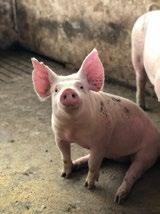






Palatants are flavor enhancers that are applied in pet foods to improve their inherent palatability and increase acceptability. They can take various forms, such as liquids or powders, and are typically coated onto dry kibble or added within the chunk or gravy of wet pet foods.
By AFB International
Palatants designed for wet pet food applications face a unique challenge compared to palatants designed for kibble coating that is thermal processing. Wet pet food palatants may be exposed to one or more thermal processing steps, such as steam or retorting before being consumed. These thermal processing steps have the ability to alter a palatant’s color, composition, and performance.
Thermal processing of palatants also generates various organic compounds which can enhance the aroma of the formulations. During this study, we examined the effect of thermal processing on the: (a) color development, (b)
compositional changes, (c) palatability, (d) the release of volatile organic compounds from eight different palatants.
A total of eight palatants were chosen, comprising two derived from fish proteins (WP1 & WP2), three from chicken proteins (WP3, WP4 & WP5), two from vegetable proteins (WP6 & WP7), and one from dairy proteins (WP8). The palatants were subjected to thermal processing for simulating the retort conditions used during the sterilization of wet pet food. Thereafter, the volatile organic compounds were analyzed to determine their variability.
Fifteen cats were included in a two-bowl palatability test, with each bowl containing a raw mixture of meat and 1% inclusion of palatant (WP2, WP3, WP6, WP7 or WP8), heated in a pressurized retorting system (F0 value of 8). The control bowl was the same for all tests and it contained WP1 (palatant with fish protein). Each cat’s first choice was recorded, and the intake ratio was calculated (in %). The differences in diet preference were tested using Friedmans two-way ANOVA.

Thermal processing can impact a palatant’s color and composition. The extent of this impact on palatant color varies depending on the formulation of the palatant. Figure 1 shows that there may be great differences in color, such as WP6 (vegetable proteins) and WP8 (dairy proteins), and some may have so little that the difference is not even visible to the naked eye, WP1 (fish proteins).
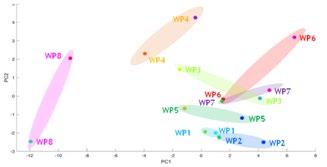
The findings also revealed that WP8 (dairy proteins) and WP4 (chicken proteins) exhibit considerable differences in the compositions before and after thermal processing as seen in Figure 2. On the contrary, WP6 (vegetable proteins) and WP7 (vegetable proteins) show similarities before the reaction, but as the reaction progresses, they start developing in different directions.

Palatants WP2, WP3, WP6, WP7, and WP8 were chosen for palatability testing and volatile organic compound (VOC) analysis. The palatability results can be seen in Figure 3, revealing that WP6 (vegetable proteins) and WP7 (vegetable proteins) had significantly equal, WP8 had significantly lower, whereas WP2 (fish proteins) and WP3 (chicken proteins) had significantly better palatability compared to WP1 (fish proteins). Having identified which palatants have superior palatability after thermal processing; it was needed to determine which VOCs were generated and their relation to increased palatability.
Eighty different VOC’s were detected and used to group palatants that produced similar compounds under thermal processing. The grouping, as well as the results from palatability, was used to divide the palatants into two classes: premium and super-premium. This classification can be seen in Figure 4. It was noted that the palatants classified as premium contained higher concentrations of aldehydes, whereas the super-premium palatants had higher concentrations of sulfur containing compounds.

Thermal processing can impact a palatant’s composition and color. This compositional change includes the generation of high concentrations of certain volatile organic compounds that enhance the flavor and palatability. High concentrations of sulfur containing compounds were noted in super-premium palatants and high concentrations aldehydes in premium palatants.
AFB understands how thermal processing can impact the palatant’s color, composition and palatability and is thereby able to produce wet pet food palatants that remain stable during thermal processing.
For more information, contact your Account Representative or afbinternational.com/contact.

When it comes to manufacturing wet pet food, the production process can be complicated due to several variables that need to be considered. One of the most important factors to consider is the palatability of the finished product. Regardless of the type of pet food you are making, it needs to taste good in order for the cats or dogs to eat it.
At AFB International, our business is making pet food taste great. That includes all types of pet food, including treats and supplements.
Our Research & Development team conducted studies on how palatability is affected by the thermal processing steps in wet pet food production. By scanning the QR code below, you can learn more about how thermal processing can alter the color and composition of a palatant, which can have a significant impact on the final product’s taste.

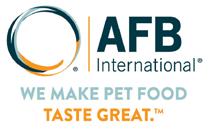
In the first part of this article, general aspects about Spray-dried Animal Plasma (SDAP) and its applications in pet food were discussed. In the second and third parts, the nutritional value and its effects on food processing were presented. Finally, in this last part, the potential benefits of this ingredient with a focus on its biological functionality in dogs and cats will be covered.
By Ricardo Souza Vasconcellos and Lucas Ben Fiuza Henríquez - APC

As previously mentioned, SDAP is an ingredient that presents high concentrations of essential amino acids and bioactive compounds, such as immunoglobulins, peptides, growth factors, enzymes, and metalloproteins. Due to its composition, this co-product also has an immunomodulatory, prebiotic, antiinflammatory, and neuroprotective role.
There is still limited research on its role in the health of dogs and cats. However, in other species, especially in pigs and rodents, and even in humans, its main demonstrated actions refer to prebiotic effects in the intestine, through the elimination of pathogens, modulation of the microbiome, improvement of mucosal integrity, and effects on immunomodulation (PérezBosque et al., 2016).
Part of the protective action of the SDAP is associated with the presence of IgG in its composition, which gives this ingredient an action of control in the population of pathogenic microorganisms and prevention of lesions on the intestinal mucosa. It was found that the ingestion of SDAP resulted in 5-10% of these biomolecules intact in dogs’ feces, which suggests its action throughout the passage in the digestive tract (Rodriguez et al., 2007). In rats fed with diets containing 8% SDAP, an increase in microorganisms of the phylum Firmicutes was observed (Miró et al., 2007; Moretó et al., 2020), which are associated with the production of short-chain fatty acids, which helps maintain intestinal pH and regulate the growth of pathogenic microorganisms, with indirect effects on the intestinal immune tolerance of the animals.
Some authors associate the microbiome modulating effect of the SDAP to the presence of immunoglobulins and other bioactive compounds present in its composition, or that can be produced from the digestion process of this ingredient. These compounds would be responsible for reducing the population of pathogenic microorganisms (Han et al., 2009; Balan et al., 2011). On the other hand, other researchers suggest a prebiotic effect, meaning that the action of SDAP would be related to its selectivity, with an increase in beneficial microorganisms and a consequent reduction in pathogens (Pérez-Bosque et al., 2008; Moretó et al., 2020). These mechanisms still need to be better investigated, but regardless of this, in piglets in the weaning phase, it is widely used for these effects, since it reduces the mortality rate of animals, the frequency of diarrhea and minimizes the effects of post-weaning
stress, due to its intestinal and immunological effects.
It is known that intestinal fermentative processes are directly related to the activation of the immune system and may lead to the induction of more inflammatory responses or, on the other hand, promote greater immune tolerance of the individual. This activation occurs by trans epithelial communication mechanisms in the gut, activated by microorganisms or fermentation products, causing a response cascade activated by several cytokines, which can activate more or less inflammatory responses. Figure 1 shows some cytokines and their effects on inflammation.

Figure 1: Relationship of pro-inflammatory (black arrows) and anti-inflammatory (red arrows) cytokines. Some cytokines exhibit dual function, as can be seen. Original image published by de Subbarao (2021).
In two studies in rats fed with 8% SDAP, the prebiotic and immunity effects of SDAP were evaluated (Miró et al., 2017; Moretó et al., 2020). In the first, the authors observed a reduction in pro-inflammatory cytokines, such as IL-2, IL-6, IL-7, and MCP-1,
and an increase in the expression of anti-inflammatory cytokines, such as IL-10, in the intestinal mucosa (Miró et al., 2017). Already in the second study, the authors included 8% SDAP in the diet of rats and verified a prebiotic effect, characterized by increased populations of Lactobacillus spp. and Blautia spp. which are directly related to the production of short-chain fatty acids, accompanied by increased expression of immune tolerance markers of intestinal dendritic cells and macrophages, and also of the cytokines IL-10 and TGF-β, both related to greater immune tolerance. Similar results were also observed in fish and pigs by other authors (Tran et al., 2008; Tapia-Paniagua et al., 2020).
In a recent study with healthy dogs, it was observed that feeding a 2% SDAP blend associated with prebiotics and probiotics had beneficial effects on fecal quality and immune function of the animals, with increased fecal IgA and CD4:CD8 T lymphocyte ratio in the group that consumed the blend. Modulation of the fecal microbiota has also been observed for some genera of the phylum Firmicutes spp. and other groups considered to produce short-chain fatty acids (Lee et al., 2022). The increase in IgA production is also related to the effects of additives having an effect on the gut microbiota, and a possible mechanism of activation of regulatory cytokines, such as IL-6 (a dual function cytokine), IL-10 and TGF-β.
Because of the high protein value of SDAP and its effects on intestinal health and immunity, more recently, some studies investigating its activity in neuroprotection in senior individuals have been published. The aging process in humans and some animal species, such as dogs and cats, is similar, which is characterized by advancement in neurological degeneration processes and in a chronic subclinical inflammatory process, called inflammageing, which affects in a general way several systems of the organism and predisposes to chronic degenerative diseases. In a study conducted with mice predisposed to premature aging of the SAMP8 strain, it was observed that providing 8% SDAP was able to minimize the impacts of aging on the animals. In this study, SDAP contributed to the improvement of cognitive function, verified through short and long-term memory tests, in addition to the reduction of pro-inflammatory cytokines (TNF-α, IL-1β and IL-6, NFk-β), and the increase of IL-10, related to anti-inflammatory actions (Garcia-Just et al., 2020), in a similar manner to its gastrointestinal effects mentioned above. In this study, the authors further observed that the animals fed with SDAP showed higher concentration of adhesion molecules at the blood-brain barrier (ZO1 and E-cadherin), which are related to a greater protection of the nervous system from the permeability of macromolecules, which may accelerate the inflammageing process. Figure 2 shows the main results of this study.
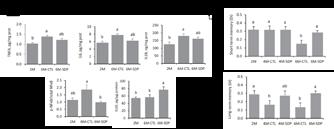
Figure 2: Results of including 8% SDAP in the diet of mice predisposed to premature aging (SAMP8) versus Control (CTL) group, at 2 (2M) and 6 (6M) of age, on cytokine gene expression (A) and short- and long-term memory tests (B). Results published by Garcia-Just et al. (The Journal of Nutrition, Volume 150, Issue 2, February 2020, Pages 303-311).
Although there are few studies specifically in dogs and cats, investigating its functional properties on intestinal health markers, immunity and cognitive functions, in the scientific literature of the last 20 years, approximately 55 published studies are found, specifically with investigations of this ingredient on the responses
mentioned above, mainly in pigs and rats, evidencing its effects. This way, due to its multifunctionality, SDAP has potential applications in pet food that have not been explored much, especially in extruded foods, which are the basis of more than 90% of pet food nowadays. To summarize the data presented in the 4 parts of this article published in Pet Food Brazil Magazine, in Figure 3, it can be verified, in summary, the different functions of the SDAP and the species studied so far.

Figure 3. Effects of SDAP studied in different animal species.
References:
Balan, P., Han, K.S., Rutherfurd-Markwick, K., Singh, H., Moughan, P.J. Ovine serum immunoglobulin has immunomodu-latory effects in growing rats gavaged with Salmonella enteritidis. J Nutr. 2011, 141, 950-956. https://doi.org/10.3945/jn.110.131433.
Balan, P., Staincliffe, M., Moughan, P.J. Effects of spray-dried animal plasma on the growth performance of weaned piglets—A review. J Anim Phys Anim Nutr 2021, 105, 699–714. https://doi.org/10.1111/jpn.13435.
Garcia-Just, A., Miró, L., Pérez-Bosque, A., Amat, C., Polo, J., Pallàs, M., Griñán-Ferré, C., Moretó, M. Dietary spray-dried porcine plasma prevents cognitive decline in senescent mice and reduces neuroinflammation and oxidative stress. J Nutr 2020, 150, 303–311. https://doi.org/10.1093/jn/nxz239.
Han, K.S., Boland, M., Singh, H., Moughan, P.J. The in vitro anti-pathogenic activity of immunoglobulin concentrates extracted from ovine blood. Applied Biochemistry and Biotechnology 2009, 157, 442–452. https://doi.org/10.1007/s12010-008-8352-7.
Lee, A.H., Lin, C., Do, S., Oba, P.M., Belchik, S.E., Sstellman, A.J., Schauwecker, A., Swanson, K.S. Dietary supplementation with fiber, “biotics,” and spray-dried plasma affects apparent total tract macronutrient digestibility and the fecal characteristics, fecal microbiota, and immune function of adult dogs. J Ani Sci 2022, 100, 1 -15. https://doi.org/10.1093/jas/skac048.
Maijó, M., Miró, L., Polo, J., Campbell, J., Russell, L., Crenshaw, J., Weaver, E., Moretó, M., Pérez-Bosque, A. Dietary plasma proteins attenuate the innate immunity response in a mouse model of acute lung injury. Brit J Nutr 2012, 107, 867–875. doi:10.1017/S0007114511003655.
Miró, L., Garcia-Just, A., Amat, C., Polo, J., Moretó, M., Pérez-Bosque, A. Dietary animal plasma proteins improve the intes-tinal immune response in senescent mice. Nutrients 2017, 9, 12. https://doi.org/10.3390/nu9121346.
Moretó, M., Miró, L., Amat, C., Polo, J., Manichanh, C., Pérez-Bosque, A. Dietary supplementation with spray-dried porcine plasma has prebiotic effects on gut microbiota in mice. Scientific Reports 2020, 10, 1. https://doi.org/10.1038/s41598020-59756-z.
Pérez-Bosque, A., Polo, J., Torrallardona, D. Spray dried plasma as an alternative to antibiotics in piglet feeds, mode of action and biosafety. Porcine Health Management 2016, 2, 16. https://doi.org/10.1186/s40813-016-0034-1.
Rodriguez, C., Blanch, F., Romano, V., Saborido, N., Rodenas, J., Polo, J. Porcine immunoglobulins survival in the intestinal tract of adult dogs and cats fed dry food kibbles containing spray-dried porcine plasma (SDPP) or porcine immunoglobulin concentrate (PIC). Anim Feed Sci Tech 2007, 139, 201–211. https://doi.org/10.1016/j. anifeedsci.2007.01.012.
Tapia-Paniagua, S. T., Balebona, M.C., Firmino, J.P., Rodríguez, C., Polo, J.; Moriñogo, M.A., Gisbert, E. The effect of spray-dried porcine plasma on gilthead seabream (Sparus aurata) intestinal microbiota. Aquac. Nutr. 2020, 26, 801–811.
Tran, H., Anderson, C. L., Bundy, J. W., Fernando, S. C., Miller, P. S., & Burkey, T. E. (2018). Effects of spray-dried porcine plasma on fecal microbiota in nursery pigs. Journal of Animal Science, 96, 1017–1031. https ://doi.org/10.1093/jas/skx034.
Plasma has been widely used in wet pet food due to its emulsifying, binding and texturizing properties, with the aim of improving food appearance and adding to the nutritional composition. In dry pet food, the ingredient promotes significant increases in the digestibility of the diet, offers further processing functionality and provides whole body health benefits. (Vasconcellos et al., 2023).
You can count on APC to help you achieve your business goals and develop new palatable, nutritious and sustainable products. Talk with our team about ingredient options and how we can collaborate in our pet kitchens in our R&D centers in Ankeny, Iowa USA or Granollers, Spain - or in your own facilities.




Talk to us and see how APC’s experience in R&D and Technical Support can help you formulate innovative new pet food products in a market with discerning pet parents who are always looking for the best pet food.


During the pet food manufacturing process, wet and dry by-products are generated. Wet by-products come from the starts and stops of the extruder, while dry by-products, also known as process fines, originate from the dryer, cooler, transports, silos, cyclones and sieves. In addition, non-conforming final products are considered byproducts, so called because they do not meet quality standards.
By Clivio Solutions
Wet by-products have a high moisture content, making them difficult to handle due to their rapid decomposition and the generation of unwanted microorganisms that can put pet health at risk. Generally, these by-products are marketed at low value for feed farm animals or are discarded.
Fines are often reinserted inefficiently into the grinding or mixing process, leading to several problems:
• Grind a product that has already been ground
• Consume additional energy in grinding
• Wear on hammers and mill sieves
• Affect the capacity of the equipment that reprocesses these by-products
The By-product Recovery System (SRS) is a proven solution to reduce, reuse and recycle both wet and dry by-products, regardless of size, temperature and moisture content.

The SRS has two tanks:
1. Homogenization tank: receives the by-products to be recovered. It has a specially designed blade that rotates at high speed to achieve a homogeneous mixture (slurry) with an approximate concentration of 20% by-products and 80% water at a temperature between 40 and 50 °C.
2. Maintenance tank: once the homogeneous mixture is achieved, it is transferred to this tank through pipes. Here, a mixer keeps the slurry homogeneous and at the proper viscosity.
The SRS control system communicates with the preconditioner-extruder PLC to ensure the correct water
content within the preconditioner and extruder, avoiding unwanted variations in moisture content and guaranteeing optimal quality and uniformity of the final product.
• Recovery of investment in a short time
• Immediate use of all by-products, avoiding the generation of unwanted microorganisms
• Optimization of process times
• Decrease in labour requirements
• Improved traceability
• Achievement of automation
• Compliance with FDA and EHEDG certifications
• Made of stainless steel
• Adaptable to plant spaces through horizontal or vertical layout
To size the appropriate SRS for your process, it is necessary to determine the number of by-products generated. With this information, the appropriate model can be selected. There are three standard models: SRS150, SRS300 and SRS600, which recover 150, 300 and 600 kg/h respectively. Special solutions can also be designed according to specific needs.
We develop complete or partial plant projects. We o er engineering and consulting solutions. We represent prestigious companies, providing excellence and maximum quality.



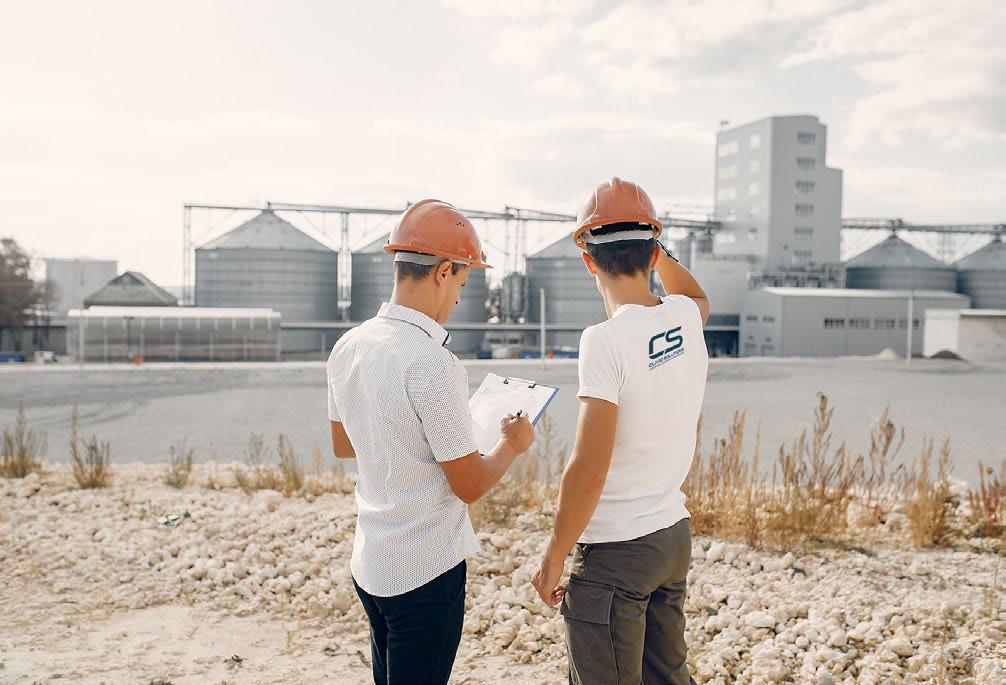

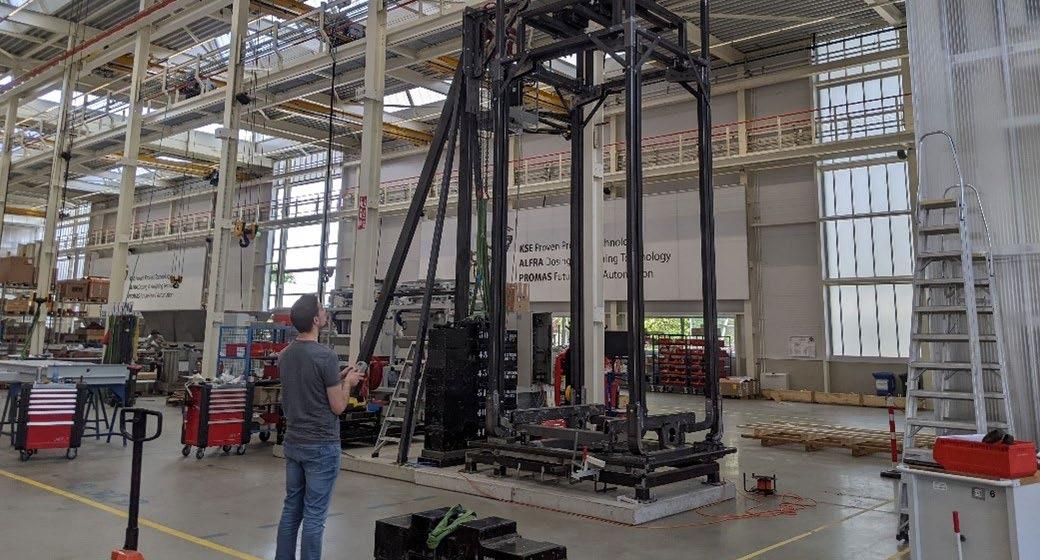
In the modern world of industrial solutions, collaboration and innovation are invaluable. At KSE, we believe in the power of teamwork and creative thinking. KSE’s groundbreaking CS-WP (Container Shuttle – Weighing Proportioning) project, a system that makes it possible to dose directly into the container within the Automatic Container Transfer concept, played a crucial role in the development of ‘’The Next Generation Plant’’ in this regard.
By KSE Process Technology
An American-based customer of KSE, operating in the premix industry, selected the CS-WP solution due to an urgent need to optimize space utilization in their production facility. This innovative solution enabled them to save significant vertical space, with reductions of 4 to 5 meters compared to a conventional weighing system. Additionally, the CS-WP system offers direct separation of contaminants for all raw materials, ensuring the entire facility remains free from contamination.
Another customer in Spain, a leading manufacturer in the food additive industry, has also expressed interest in the CSWP solution because of their stringent contamination control requirements. The CS-WP system allows macro ingredients to be safely transported in dedicated containers, ensuring clean and flexible distribution to three separate mixing lines
The customer explored two alternative solutions. Initially, a traditional pneumatic conveying system was considered but dismissed due to hygiene issues and excessive energy consumption. The second option involved a container concept relying on AGVs (Automated Guided Vehicle). Ultimately, KSE’s CS-WP concept emerged as the most fitting and seamlessly integrable solution, enabling the maintenance of the desired compact building height.
The client positions the CS-WP project as the ‘’Next Generation Plant’’, hinting at the possibility of establishing future plants based on the same concept. This marks the inaugural joint project for the Spanish customer and KSE, with aspirations to extend this concept to other facilities, thereby assuming a pioneering role in the Spanish food additive industry.
The CS-WP emerged as a groundbreaking weighing solution within the ACT (Automatic Container Transfer) framework, renowned for its internal transport capabilities. Manufacturers are seeking space-saving solutions in their plants while aiming to achieve minimal contamination by dispensing products directly into containers. Tailored to accommodate a wide dosing range, this solution stands out for its versatility.
The concept promptly resonated with our customers’ needs and industry demands, particularly in sectors like premix and pet food. The development process of the CS-WP entailed tackling several design challenges, such as achieving optimal balance in the setup. With dimensions of approximately 1.5 meters x 1.5 meters and a height of 5 to 6 meters, this resulted in a column four times as tall as it is wide. This configuration posed potential tipping hazards,
especially when the system was in motion while carrying weight at the top. To prevent this, rollover safeguards were implemented, and extensive testing was performed.
Another crucial aspect involved a meticulous examination of the system’s extraction process. Customers typically invest in an ACT system to maintain a pristine working environment with minimal contamination. However, if dust escapes through open joints during each movement, this objective is compromised. Moreover, the extraction process must not interfere with the weighing signal during the dosing process, ensuring that accuracy is not compromised.
Following extensive consultation and collaboration with suppliers, multiple concepts were devised and executed by the mechanical, electrical, and software teams. Presently, two variants are available: one where dust from the filters returns with the product, minimizing contamination but ensuring all product accompanies it through processing, and another where dust extraction directs waste to a remote unloading point, eliminating contamination but resulting in waste. The selection between these variants depends on the customer’s specific needs and requirements.
During the implementation phase of industrial solutions, addressing technical challenges is only part of the equation; understanding real-world usage is equally vital. Hence, KSE engages its service department from the beginning of a project to ensure that aspects, such as cleaning positions, accessibility, and
installation safety are meticulously accounted for. This approach establishes a robust groundwork for a successful project, enhancing both efficiency and safety.
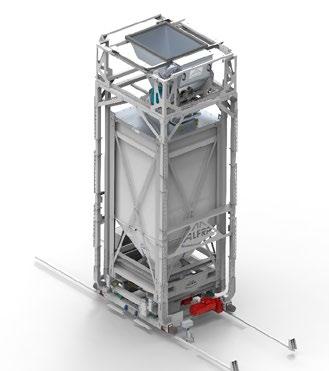
Specialized in dosing & weighing systems and smart automation software for the nutrition and solids industry.





The current generation of consumers, especially young people, requires that companies adopt sustainable and responsible procedures. According to them, sustainability is not just an option, but a decisive criterion when choosing products. The pet food industry in Latin America is not the exception. Being aware of this movement, companies are taking concrete actions to reduce, recycle, and reuse resources, making a sustainable future and attending to new client expectations.
By Iván Franco
In a world where natural resources are limited and ambient awareness is rising, sustainability is not a trend, but a long-term change in consumer culture. In this context, pet food industries in Latin America are rapidly adopting social responsibility procedures, which aim to minimize environmental impact and add value to society and consumers.
Many companies have been striving to reduce waste and optimize their production processes. For example, Mars Petcare is taking significant measures to reduce its carbon footprint by redesigning their packaging for recyclable
ones. Also, they are transitioning to use renewable energy in all facilities by 2025. In addition, they launched programs for using recyclable materials in their products, teaching consumers about the importance of recycling.
In Brazil, BRF is committed to becoming a Net Zero carbon emissions by 2040 using renewable energies, the promotion of low-carbon agriculture, and the launch of carbon-neutral products.
Nestlé Purina invests in operations in Latin America, including the extension of its facilities in Silao, Mexico. It has become one of the biggest in America Latina and uses advanced technology to reduce environmental impact. Nestlé Purina promotes the reduction of greenhouse effects and the use of recyclable packaging.
Recycling is a key factor in sustainability strategies in the industry. By implementing packaging recycling programs in Perú and Colombia, Nestlé Purina promotes reusing materials and reducing the use of plastic materials and plastic. This initiative not only helps to preserve the environment but also to encourage circular economy, which is a benefit to the company and the local community.
In Brazil, Adimax launched campaigns to collect and recycle post-consumer packaging, making them useful for backpacks or pencil cases. It not only reduces plastic waste but also supports animal shelters donating food in exchange for collected packaging.
In Mexico, Nupec stands out for its commitment to sustainability through several initiatives. The company carried out a recycling program, called “Let’s Recycle”, which encourages consumers to return used packaging for recycling. In addition, by working with local suppliers, Nupec promotes national trade and ensures sustainable and high-quality practices in the section of raw materials. In its Innovation and Technology Centre, Nupec also does continuous research that focuses on digestibility and palatability, ensuring optimum pet nutrition.
In Perú, many pet food industries are committed to social and ambient responsibility. An outstanding example is Rintisa which implemented programs about reusing packaging and materials by transforming them into useful products and promoting a circular economy in the region.
Molino Chacabuco, a company from Argentina, also stands out for its support. It has significantly reduced its use of paper and waste; it uses renewable energy for 90% of its production and collaborates in recycling and circular economy projects like creating dog shelters with Tetra Pak. Moreover, Molino Chacabuco sustains a partnership with Fundación Banco de Alimentos by donating and participating in campaigns that aim to reduce hunger and improve nutrition in local communities.
Reusing materials is essential to close the product lifecycle. Agroindustrias Baires in Argentina developed a program about reusing balanced food packaging, in which consumers can return post-consumer bags to transform them into useful products. This initiative not only promotes sustainability but also supports the local community by donating food to animal shelters.
The company Carozzi, from Chile, showed a strong commitment to sustainability in pet food manufacturing. It incorporates recycling and reusing materials practices in its production process, reducing waste and promoting a circular economy.
Transparency is fundamental to sustainability. Many industries are publishing their ethical codes and sustainability reports as part of their commitment to social responsibility. In Ecuador, Bioalimentar launched its Memorias de Sostenibilidad, following the Global Reporting Initiative (GRI)
standards to evaluate its economic, social, and environmental performance. These reports not only strengthen the link with their interest groups, but they are also exercises of transparency and responsible management.
Reducing, recycling, and reusing measures benefit the environment and improve corporate image, as well as consumer loyalty. By adopting sustainable practices, companies not only answer society’s call but also contribute to creating a sustainable and responsible future.
In addition, these initiatives can generate important longterm savings. Efficient energy, reducing waste, and reusing materials lessen operational costs and open up new market opportunities, especially between environmentally conscious consumers.
In Latin America, the pet food industry is making significant efforts to integrate sustainability into its operations. These initiatives are essential to satisfy consumer expectations and ensure a positive impact on the environment and society. The companies already mentioned are examples of how the industry is a leader for a green, cleaner, and responsible future, creating a long-lasting impact at local and global levels.
In the future, more companies are expected to adopt these practices, driven by the growing demand of consumers and government regulations. Partnerships between companies, governments, and communities will be the key to moving in this direction, ensuring sustainable development for the pet food industry and the region.
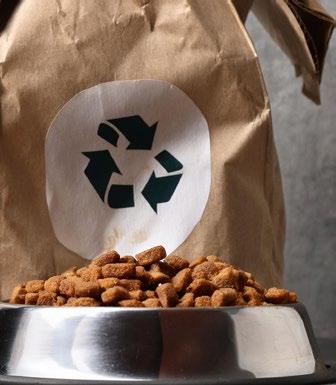

¡Don’t settle for basic data! Our advanced analytic services are changing the rules in pet food industry.

We predict market trends for you to be a step ahead the competition.
Product Personalization: We use detailed data to help you create personalized products that make your furry clients fall in love.
Price
betransparent@triplethreeinternational.com triplethreeinternational.com

At STATEC BINDER, we stand for expertise in the development, assembly and marketing of packaging machines and palletizers, as well as for long-term partnerships with our customers. The main focus lies on high-quality customer advice before the purchase and after the delivery of a STATEC BINDER system. The aim is to ensure efficient and safe handling of our systems.
By STATEC BINDER
Our comprehensive, worldwide customer service includes numerous services, such as inspections, detailed customer trainings on site, the storage of spare and wear parts close to the customer and extensive maintenance by our service technicians.
The 1–6–11 service program enables customer advice and support after the delivery of a STATEC BINDER system with the highest level of expertise. The program allows the machines to be optimally adapted to the individual needs of the customer and enables our technicians to answer project-related questions in person.
The machines are installed by our technicians together with the customer, the production capacity is tested, and parameter checks are carried out. In addition, the future machine operators receive extensive training.
The customer should already be confident and familiar with its system. The focus lies on fine-tuning the machine, whereby
a further visit, parameter checks, refresher trainings and visual inspections are carried out. Further customer training takes place if required.
Our service technicians visit the customer one more time and inspect the machine. The technicians make recommendations for a better use of the system in the future, in order to complete the fine-tuning process. Finally, an individual maintenance plan is drawn up for the respective system to ensure smooth cooperation in the future.
In addition to the comprehensive service program, our customer service is also characterized by the wide range of spare and wear parts Required spare parts can be ordered and shipped globally and easily. Our customers also benefit from our Remote Maintenance System. With this innovative technology, problems that cannot be solved by customers themselves can be identified from our company located in Austria. Beyond that, the further procedure can also be defined remotely.
In addition, after the delivery of the machine, our customers get largely informed about the optimization and modernization of their systems by our service team. The focus lies on fine-tuning the machines with various modernization measures, such as new standards or updates In this way, we can continue to help ensure that the high-quality systems perform reliably for many decades to come.



It is estimated that between 20% and 30% of domestic dogs suffer at some point in their lives from food allergies that lead to skin problems. These intolerances would be the third cause of itching for our pets, behind only atopic skin and allergy to parasites, such as fleas. Protein from the insect Tenebrio molitor can help to control these disorders without neglecting a diet rich in high quality protein.
By Sabas de Diego, CTO at Tebrio, Spain
Food allergies are a more common problem than we often think for the pets we live with. Almost a third of the world’s dog population suffers from a more or less severe intolerance during their lifetime. Sometimes, they manifest through intense itching in areas, such as the paws, back, or abdomen. Sometimes, they develop into flaking of the skin. And in some cases they lead to rashes, loss of fur and other secondary lesions caused by scratching, which can even trigger a dangerous bacterial infection if not treated in time. They also often cause gastrointestinal problems, ranging from vomiting to diarrhoea to upset stomach inflammation, or recurrent ear infections due to sustained irritation of the ear canals. And even respiratory problems.
Among the most allergenic foods are animal proteins, which at the same time, and under normal conditions, are essential for the correct development of our pets. Of these animal proteins, the ones that cause most intolerances are beef, followed by lamb, chicken, and fish. All of them are usually included in the formulation of the most balanced feeds we can find on the market, together with wheat, maize, soya, and dairy products, the other commonly consumed ingredients that can cause the most problems of this type.
Detecting these intolerances is not always easy, as the same symptoms may respond to other types of skin problems or illnesses of a different nature. But if there are suspicions, a

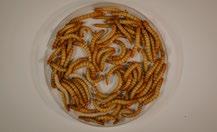
provocation test and elimination of certain ingredients from the diet can help us to clear up doubts and find solutions.
Fortunately, there are alternatives. One of them is the protein from the Tenebrio molitor or mealworm, a extremely versatile insect that offers top-quality ingredients for animal feed. The meal that Tebrio has managed to extract from this coleoptera not only achieves 72% crude novel protein, but is also more than 90% digestible and highly palatable.
Studies carried out in recent years have also revealed that it has a regulating effect on the microbiota, which promotes the balance of the intestinal flora and improves the animal’s immune response in periods in which, for one reason or another, there has been a drop in the level of defences. Furthermore, and this is particularly important when it comes to allergies, our pet’s organism will not have an acquired memory of the protein of this insect, so it will be much less likely to cause a diet-induced skin alteration.
In this regard, a recent clinical trial conducted by scientists at Chungbuk University in South Korea reveals that this ingredient has a high degree of hypoallergenicity. This research was carried out on 19 atopic dogs that also suffered from adverse skin reactions to food.
They were classified into 3 groups. The first group of seven individuals received an insect-based diet. The second group of six dogs was given a salmon diet. And the third, of six others, fed a commercial or homemade diet that was also hypoallergenic in principle. The experiment was spread over twelve weeks. The degree of lesions was assessed according to the Canine Atopic Dermatitis Extent and Severity Index (CADESI-4). At the same time, transepidermal water loss (TEWL) and the pruritus visual analogue scale (PVAS) were also evaluated.
Well, after 8 weeks, the group of dogs fed on Tenebrio molitor protein showed a significant decrease in CADESI score compared to the other two groups. The same was true after 12 weeks. Also, there was a decrease in transepidermal water loss at the end of the two and a half month test. And although the study universe, the number of animals surveyed, was small, the scientists concluded that the preliminary results reinforced the thesis that mealworm protein can help to reduce skin barrier dysfunction and the severity of skin lesions. Including those that the animal inflicts on itself in an attempt to soothe the itching it suffers.
Insect-based diets have already been used in veterinary medicine to optimise production in industrial farms and fisheries for species, such as pigs, poultry, freshwater and saltwater fish, and shellfish. And since 2015, they have also been used to diagnose and treat food-associated allergic skin

disorders. In Europe alone, there are dozens of pet foods that integrate insect protein and fat.
All indications suggest that Tenebrio molitor protein has a unique molecular structure, both in terms of its amino acid sequence and its three-dimensional conformation. And that these differences mean that it goes unnoticed by the animal’s immune system, which ultimately reduces the risk of triggering an allergic reaction. Because, in addition, their appropriate processing can also reduce the presence of potential allergens considerably, increasing the degree of tolerance in sensitive animals.
At the same time, mealworm protein meal strengthens the immune system, as it contains low molecular weight antimicrobial peptides and an optimal proportion of fatty acids. It not only strengthens the intestinal flora, but also has antioxidant properties and can mitigate certain cell damage.
Similarly, the fat extracted from the larva is rich in Omega 6 and 9, unsaturated fatty acids (>70%) and a natural source of oleic, linoleic and alpha linolenic acids. It has antiinflammatory properties and such a low acidity that it is ideal for premium feed formulation.
And all this, with a low environmental footprint, is far lower than that of other conventional protein sources. According to consumption figures for the last decade, in 2014 the pet sector needed 36 billion kilos of food to meet global demand. Today it requires 57 billion. And next year, it will reach 60 billion as, far from stalling, the pet population continues to grow. And there is no sign of it slowing down. Especially in Europe, North America, and South America. Hence the importance and urgency of finding alternative sources of supply to relieve the pressure on the global animal protein market. And the need for these new resources to be environmentally friendly.
From this perspective, insects represent an opportunity worth exploring. Their rearing and processing on an industrial scale emits very little greenhouse gas emissions and produces no waste of any kind. Similarly, the quality and safety of the ingredients obtained from them are fully tested and approved by health authorities. And their production requires infinitely fewer natural resources than any other farm to bring a comparatively much higher volume of protein to market. This allows us to optimise the use of available arable land and water to get the most out of nature’s assets without exhausting them.
The petfood industry has a promising future ahead, although it will have to continue innovating as it has done so far in order to find new functional ingredients that respond to specific nutritional and health concerns. And at the same time, it will have to adapt to the environmental requirements demanded not only by regulators, but also by customers.
News about the national leader company in Research and Development, belonging to SETOP Group, means a significant advance in the pet food industry.
By SETOP
Implementing an analytic process to identify and determine volatile compounds as secondary indicators of fats and lipid oxidation through solid-phase microextraction and gas chromatography–mass spectrometry is an important sign of the company’s commitment to quality and innovations in the pet food industry.
Focusing on fresh and quality food, as well as animal welfare, not only improves the product offering in the market but also establishes new standards in the industry. Having the ability to identify and quantify lipid oxidation compounds, such as hexanal, 2,4-decadienal, and 2-heptenal, among others, at trace levels is crucial because these compounds influence consumer organoleptic perception.
It is encouraging that companies like Innocon are leaders in the Biobío Region and contribute to scientific
development and the local economy. Roberto Valenzuela, head of the R&D of Chemical and Instrumental Area, and his team are an example of how applied research impacts directly and positively on the pet food industry and, as a result, on society.
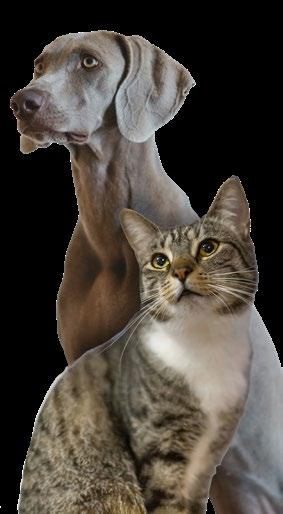
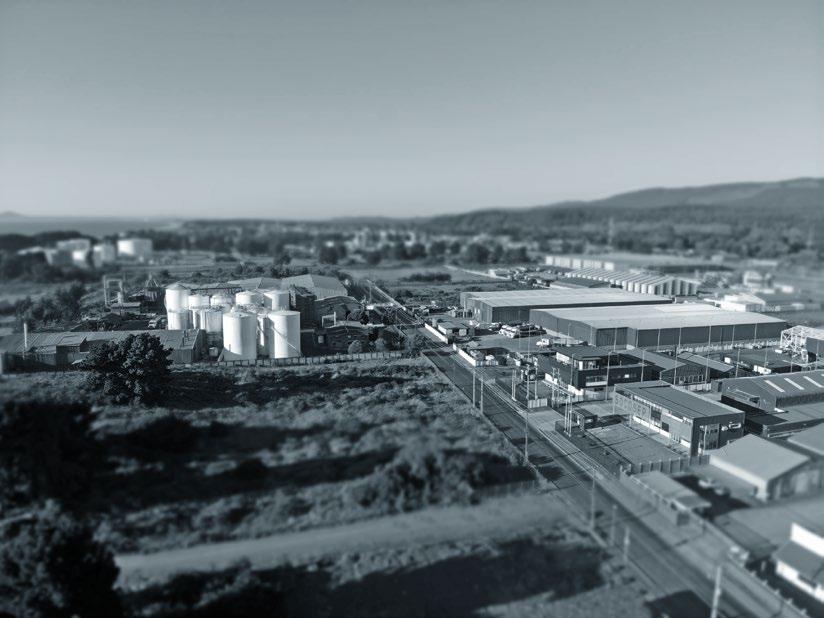















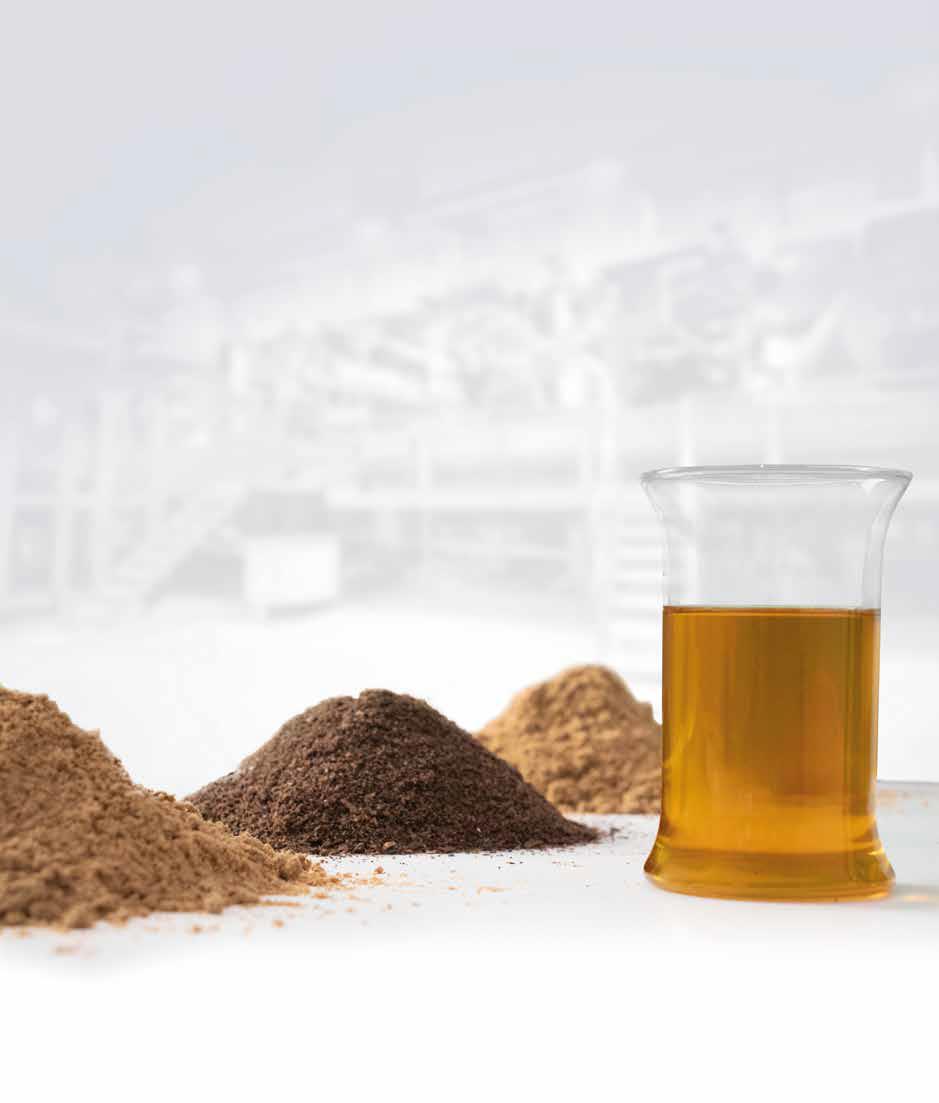



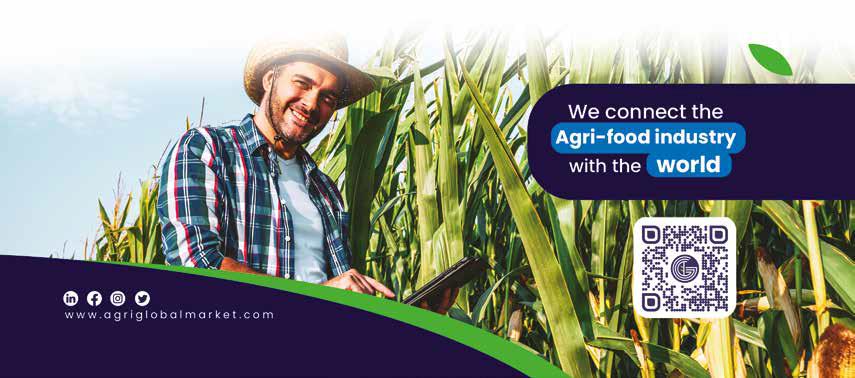
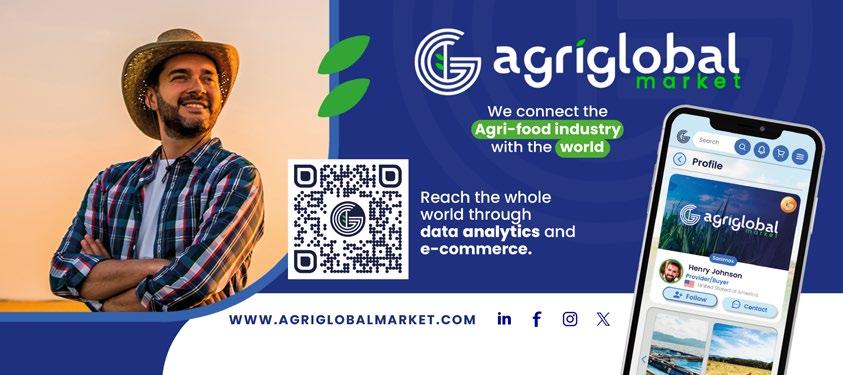



At the present time, sustainability is an increasingly relevant topic, and it is challenging to implement Environmental, Social and Governance practices because they require concrete and effective objectives and action plans. The 3Rs principle (Reduce, Reuse, and Recycle) provides a practical guide to minimize the environmental impact and promote a conscious use of resources.
By Kemin Nutrisurance
At Kemin Nutrisurance, we are constantly committed to sustainability by adopting practices aligned with Sustainable Development Goals (SDGs), adopted by the United Nations, and implementing initiatives that seek circularity and align with the 3Rs. In the article, we will explore each principle, highlighting their importance and application in our company.
Reducing waste is the base of our sustainability strategy. In 2023, we adopted various actions to minimize the amount of waste that end up in landfills. Our guidelines to manage waste are in our Solid Waste Management Program, align with the current Ambiental law. These guidelines not only help to prevent soil, air, and water pollution but also an efficient management of resources.

Kemin Nutrisurance also stands out for its recycling area. In 2023, we raise awareness among our collaborators about the importance of recycling through awareness campaigns on waste and recycling.
Our recyclable wasting, such as plastic, paper, and craft from the packaging raw materials and supplies are sent to a recycling plant. We have agreements with specialized companies to ensure the correct destiny and direction of recyclable waste.
In June 2023, we begin to allocate sludge from the effluent treatment plant, organic waste from the production process, and ashes from the kettle to a compost specialized company. As in Figure 1, the process results in the production of a soil conditioner that give added value to the waste. In 2023, these actions diverted over the 60% of waste that would end up in landfills, minimizing the need of new landfills and benefit the soil.
We developed the social program Proyecto Nuevos Caminos: Nutriendo el Mañana, visit the link https://info.kemin.com/ pt-br/projeto-novos-caminhos for a better understanding. One of the bases of the program is to promote recycling, especially of plastic covers, and allocate financial resources to an institution that take in children and teens in vulnerable situations.
For two years, 2022 and 2023, we were recognized for this social
responsibility initiative. Due to our support to program Proyecto Nuevos Caminos, we received a certificate and a sign from the Empresa Ciudadana del Ministerio Público y Tribunal of the Justice of State of Santa Catarina.
Reusing resources is essential to sustainability. In 2023, we opened up a new Effluent Treatment Station (ETS). This new structure, made with an activated sludge system, uses moderns and efficient process.
The new ETS multiplied by five the treatment capacity regarding to the old one, generating better quality effluent. Thinking of the efficiency in the use of resources, we have an effluent reusing system and a fertigation system. After the treatment, the effluent is sent through a fertigation system to the agricultural land area. In this way, we reuse 100% of the treated effluent, promoting the resources reusing and contributing to the improvement of the soil and crops.
Our effluent management practices are aligned with the SDGs 6 that aim to improve water quality by 2030. We invested in a new Effluent Treatment Station in order to treat our industrial effluent, which entered in operation in 2023 compared to the old one. Besides using a treatment process that generates a better treated effluent, the current ETS has multiplied by five the treatment capacity. At the same time, it delivered a maximum efficiency removing 99% of concentration of biochemical oxygen demand (BOD). After the treatment, 100% of the effluent is reused in agricultural land areas through a fertigation system.
Reducing, recycling, and reusing are practices that align with SDGs 12 goal 12.5 that aim to substantially reduce waste generation by 2030. In 2023, we significantly reduce the delivery of wasting to landfills, minimizing places for elimination, and adding value to the generated wasting. As a result of our circularity initiatives, we also succeed in diverting 60,27% of landfill wasting.
In 2023, 100% of the consumed energy at Kemin Nutrisurance was clean and certified. It came from renewable sources and was bought at the electricity market, which is aligned with SDGs 13 goal 13.3, aiming for climate change mitigation.
During the same year, we implemented a new kettle by biomass burning. Besides having higher levels of atmospheric emissions at environmental levels, it has the purpose of reducing liquefied petroleum gas (LPG) consumption. This improves atmospheric emissions rates and reduces fossil fuel consumption.
Considering scope 1 and scope 2 emissions, our emissions were 6,692 t CO2eq and 4,371 t CO2eq by 2022 and 2023. Compared to 2022, we will reduce greenhouse gas (GHG) emissions by 34.7% in 2023.
Our reducing, recycling, and reusing practices are integrated into each operation. We will continue innovating and implementing actions that promote sustainability, ensuring the reduction of our environmental impact and the responsible use of resources for a sustainable future.





SCOTT KREBS PRESIDENT OF WENGER GROUP
Scott Krebs took the role of President of Wenger Group in June 2023, but his history with companion animals and their industry has a way longer journey! Let’s talk with him about his life, career, and professional challenges ahead:
By All Pet Food
1. Scott, tell us a little bit about your professional career and how you arrived and rose to your current position at Wenger Group.
I’ve lived most of my life in Sabetha, Kansas, which has an incredible amount of industry professionals per capita. One of those industries in my hometown happens to be the Wenger Group. Because Sabetha is centrally located among many US pet food producers, I was aware of the pet food industry at a young age. I’ve always loved our companion animals and our family currently has three Australian shepherd-husky mix breeds that are truly part of my family. I obtained a mechanical engineering degree from Kansas State University and promptly returned to my hometown. I was an associate at Extru-Tech, Inc. for 32 years gaining knowledge in the various fields of project engineering, international sales, and brand management. I was honored to be appointed as President of Wenger Group in June 2023.
2. How does your background in the pet food industry help you lead the Wenger Group?
Process Solutions with emphasis on extrusion cooking, drying, coating, and cooling – especially for pet foods and treats – has been a passion for my entire 33-year career. Throughout that time, I’ve been fortunate to work with some incredibly knowledgeable extrusion cooking experts and some of the most forward-thinking and well-managed pet food producers in the world. From early in my career, I understood the importance of listening intently to understand customer needs, wants, and desires and collaboratively reaching solutions that meet their goals.
Wenger’s corporate focus is to provide customers with an “unparalleled customer experience.” Although Wenger is a well-established and trusted name in the industry, we cannot be content with past success. Our customers face market and competitive challenges, and we must stay ready with updated solutions that can enable our customers to be
successful.
3. What do you think is the current main challenge among Latin American producers?
We see a growing opportunity in this region for foods and treats with higher levels of fresh meat content, unique inclusions, and increased palatability. Achieving these types of products requires a more advanced knowledge of extrusion cooking and drying. Our customers can enjoy first-mover advantages by working with Wenger to produce unique (and higher value) products for their market. Demand for traditional kibble will continue to be strong, but producers who can offer a wider range of foods and treats within a single flexible equipment architecture can be even more successful in Latin America.
4. How can producers know whether to use twin-screw or single-screw extruders for pet food or treats?
The answer to this starts with knowing the types of desired product characteristics (now and in the future). A single screw extruder is the workhorse in the industry around the globe. They are very effective for high volumes of established products while at the same time offering variability in recipe management. However, if a customer wants to create many different types of foods and treats–with at times even further ingredient and processing flexibility–from the same extruder, then we may suggest twin screw technology. The decision is not about which technology is better because both deliver on metrics all companies measure such as safety, performance, and quality, but rather about the selection of the correct tool to accomplish the customer’s current and future states of their business model.
It’s also important to note that choosing the right holistic process solution (including drying, coating, cooling, and process controls) should be considered as an equally important decision to that of the extrusion system alone. For that reason, Wenger Group employs many process solution experts who were former customers utilizing extrusion technology. Our Process Group

SMEs (subject matter experts) are equipped through education, experience, and frankly the “school of hard knocks” that provide valuable insight into various available integrated process solutions.
5. What new initiatives are the Wenger teams focused on?
As part of our overall customer experience initiative, we are focused on technology innovation, manufacturing excellence, and expanding our process knowledge. We are designing and commercializing many offerings including the new PetFLEX™ extrusion system, improved control systems complemented with data analytics, and MES (Manufacturing Execution Systems) overlay for Wenger extruders and dryers. We also have decarbonization modifications for dryers including the use of high temperature heat pumps. In manufacturing, we are implementing processes to decrease lead times while enabling us to use newer, more sustainable materials. Wenger’s reputation for extrusion process expertise is well deserved, but we stay diligent in understanding the changing demand for ingredients (including alternative proteins), palatability requirements, shapes, textures, and coatings. As we partner with customers, we try first to understand their needs, wants, and desires – and then we refine and/or recommend processes and hardware accordingly to meet and often exceed those expectations.
6. How do you support customer Research & Development?
Wenger customers (globally) are constantly developing new products to be successful. Enabling customer R&D has been core to our company for over 60 years, mostly through the Wenger Technical Center, located in Sabetha. For decades, producers of extruded pet food, aquatic feed, and human food have used the Technical Center to confidentially develop new product ideas in a facility with production-scale equipment. This is important because products developed in a small-scale test lab may not translate well into a full-size extrusion system. Plus, at the Technical Center, customers have access to the Wenger process team that can help with ingredient selection, process variables, extrusion parameters, and other critical aspects. We’ve been told numerous times that the Wenger team helped a customer achieve something they probably couldn’t have done on their own at scale and speed to execution. As mentioned earlier, it is woven into our DNA to provide an “Unparalleled Customer Experience” in all aspects of our business. We are a passionate, caring group that is honored to assist our customers!
7. What market trends do you see emerging over the next 5 years?
Globally, the trends for pet foods will include more variability in ingredient selection, breed-specific diets, increased palatability, increased nutrition, and treats with unique shapes, colors, and fills that all add to our companion animal’s life-long well-being. Pet food producers – like most companies – also have sustainability initiatives and responsibilities that will demand technology solutions that reduce energy usage and are carbon-smart. Processing flexibility & agility will be paramount. Customers want to produce multiple products, with unique ingredients, on the same equipment, and with the same set-up, if possible, to optimize uptime. In other words, producers will increase their product offerings while decreasing production costs. Here at the Wenger Group, we embrace the challenge, and we look forward to working with our customers on these opportunities.




For All Pet Food, industry events create bridges for sector training and networking. Getting to know each other is an opportunity to connect and exchange knowledge, news, and trends.
Here, we treasure some fragments of moments we have shared with the entire industry community. Relive the experience with us!

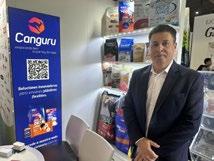
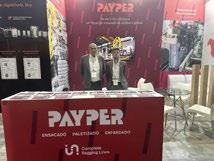
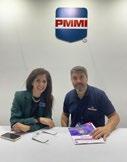
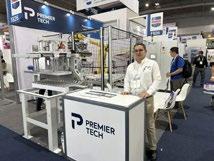



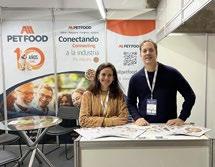




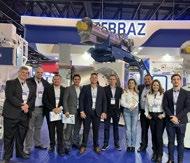



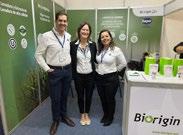

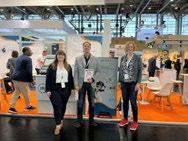
INTERZOO



SEMINARIO DE EXTRUSIÓN EXTRU-TECH





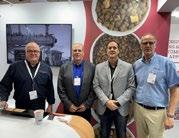

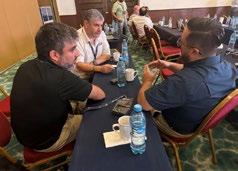



In this All Pet Food Magazine section we highlight the latest innovations to optimize pet food production.
Let’s take a look at the solutions proposed by different supplier and market leader companies.


Manufacturing execution systems identify inefficiencies and optimize production. This powerful system can be everything from Overall Equipment Efficiency (OEE) for one area of a plant to a fully integrated solution with a paperless plant floor and everything in between. Implementing these features takes deep process and control system knowledge. Since every plant has different processes, machinery, KPIs, and process targets, the best solution is going to be a tailored fit. At NorthWind, we utilize production and process data for plant optimization with a manufacturing execution system developed for you, with you.
Visit us at northwindts.com to learn more about our custom MES solution


Aqualab is the fastest and most precise instrument to measure the water activity around the world
The meter Aqualab Series 4TE measures the water activity (aw) of the samples following the same methodology as the dew point sensor. This device has an internal temperature control to measure the aw levels of products in a precise way. It can be used in shelf life studies, moisturizers addition, microbiology control, quality assurance, and temperature effect evaluation in the aw of the samples. In addition, it is used to fulfill and follow the private and/or governmental norms and requirements about the water activity and temperature.
Features
• Accuracy: ± 0,003 aw.
• Infrared sensor to determine the temperature of the samples.
• Aw measurement range: 0,030–1,000.
• Resolution: ± 0,001 aw.
• Operating temperature: 5 – 43 ºC.
• Equilibrium measurement time: less than 5 minutes.
• Samples temperature control: 15–50 °C.
• Dew point sensor.
Aqualab Series 4TE also incorporates:
• Passwords for different users (name – alphabetical – lowercase and uppercase letters – accent mark).
• Password to calibration.
• Multi-language programmable / Date-hour / ºC-º F.
• Stores up to 10,000 measurements (Details: date, hour, temperature, time, measure)
• It can be stored by hand and a name can be assigned to the sample.
• Analysis: Cover temperature / Sample temperature / Mirror temperature / Optical voltage.

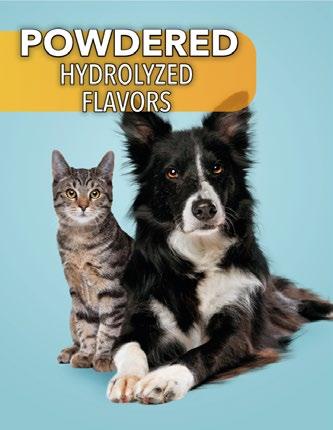
ZOADIGEST DOG DRY AND ZOADIGEST CAT PW6
Enhancing the sensory experience of pet foods with hydrolyzed powder palatants
Dry pet foods constitute an important part of the market; however, compared to wet or semi-moist foods, they are generally less appealing to pets. Therefore, improving their palatability is one of the main goals for brands.
In the production of extruded dry foods, coating with flavor enhancers (liquids or powders) is the primary method to increase palatability. Preferred flavor enhancers are those based on hydrolyzed animal proteins subjected to Maillard reactions. The combination of liquid and powder flavor enhancers has shown better palatability results.
ZOADIGEST Dog Dry and ZOADIGEST Cat PW6 are part of Callizo’s line of hydrolyzed powder flavor enhancers designed for external spraying or incorporation into the formulation of extruded dry food. They significantly enhance the sensory experience in premium and super-premium foods for dogs and cats.
The palatability of food is crucial for pets as well as for their owners. Powdered palatants enhance the sensory experience and increase the acceptance of kibble. Callizo Aromas, designs innovative solutions of integral palatability, which include different types of palatants and texture enhancers, thus achieving the preference of pets and the peace of mind of their owners.

PAYPER , one of the main European manufacturers of complete bagging lines, has proved itself a solid partner for pet food producers in Latin America.
The company offers customized solutions for premade open-mouth bags from 5 to 25 kg (11 – 55 lb), covering the entire process from dosing to pallet protection.
Open-mouth bag filling: PAYPER’s wide range of fully automatic baggers includes models for pet food, aqua feed and animal feed. With a high-precision dosing and weighing system, these bagging machines achieve speeds up to 1,800 bags per hour. Available with a system for quick and easy change between bag types and kibble sizes, PAYPER’s patented Bag Top Leveller and a probe for emptying the bag of air and filling it with inert gas.
Versatile palletizers: Gripper palletizers are fast and accurate even when overlapping open-mouth bags is required. The result is a stable, square, and perfectly stacked pallet. Available with automatic plastic or cardboard slip-sheet placer.
Wrapping and hooding systems: PAYPER’s end-of-line solutions include stretch hooding and rotary ring wrapping machines. These systems offer fast wrapping speeds, total load protection and top-quality finish. The outcome is a finished pallet with impeccable shielding against dust, UV rays and humidity all set for demanding handling like transportation and storage.
Based on PAYPER’s more than 50 years of experience, the subsidiaries in Mexico and Brazil guarantee optimal customer service.

info@tecnuar.ar
+54 9 341 3408836

One of the main points is environmental responsibility. Together with the R&D department, they collaborate in actions to reduce pollution, giving added value to the raw materials in the food industry
Tecnuar has offered solutions to the animal nutrition industry for over 15 years. With its technology, it specializes in the development, manufacturing, and commercialization of innovative additives for pet and production animals.
It focuses on detecting concrete needs in the animal nutrition world and making a product that fulfills them. In this regard, they created unique products that aim to enhance animal nutrition in a complementary way, generating excellent results.
With extensive expertise in the field of Chemistry and Physics, both in laboratory development and industrial processes, the company works to achieve quality standards that satisfy the clients.
Aiming at an evolution in nutritional requirements, they seek to optimize products, providing an exceptional service.
They produce additives and supplements to the development of proper pet nutrition in a complementary way. By using precision technology, they provide innovative solutions to achieve better efficiency in systems, generating a positive impact on society, the economy, and the environment.
Its portfolio includes a wide range of products:
• Additives and supplements to the development of proper pet nutrition, providing volume growth and genetics in high-production animals.
• Energy supplements for monogastric animals (equine –birds – pork) containing Omega-6 and Omerga-3.
• Bypass fats, elaborated from vegetable fatty acids.
• Timed-release urea for ruminants, safer NPP supply.
• Palatability enhancers for pet food (dogs and cats). A significant contribution to flavor and aroma, two fundamental principles to the success of food in the market.
Tecnuar controls the entire production chain, from the R&D to the commercialization of products. Its distinguishing element is safe and committed work, taking care of traceability in a continuous improvement process, always focusing on the quality of products.



In each All Pet Food Magazine issue, we share recognized products and new launches from prominent worldwide pet food manufacturing companies. We present innovative formulations with high-quality raw materials, in line with market trends, obtained through technological production processes, and providing benefits to both pet health and nutrition.

Fawna is a premium balanced food free of artificial colors and preservatives designed to meet the nutritional needs of dogs and cats of all ages and sizes. Formulated with highquality ingredients, it combines animal proteins as the first ingredient (salmon and chicken), along with a variety of fruits and vegetables that provide essential vitamins, minerals and antioxidants. It is carefully formulated to promote a healthy digestion, strengthen the immune system, and maintain skin and coat in optimal conditions. Furthermore, together with its high level of digestible essential amino acids (DIAAS), coming from high-quality protein, it allows to reduce the amount of carbohydrates and provides a natural and healthy diet. Fawna is the perfect choice backed by nutritionists and vets.
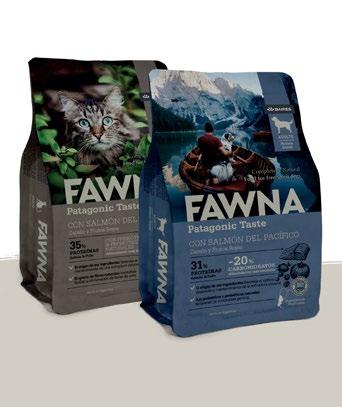




The Tianjin plant, located 150 km from Beijing, will supply Mars’ pet portfolio nationwide.
Local media reports that the firm’s dry food production lines are operational, and a snack production line is expected to launch in the second half of 2024. The factory’s annual production capacity could exceed 250,000 tons once in full operation.
https://bit.ly/4bIm8GX

The initial results of a research conducted by Nomisma for Zoomark reveal the purchasing habits of pet owners in Italy for products in the non-food sector, including supplements, anti-parasite products, accessories, toys, hygiene products and cat litter.
https://bit.ly/461ZM27

Enifer received a capital injection of €36 million ($39M) for the construction of a facility to produce its proprietary mycoprotein PEKILO, a sustainable fungi-based protein for human and pet food applications.
https://bit.ly/4bI1LcT

The next edition of the professional fair for the pet sector is scheduled to take place from 26 to 28 February 2025, organised by IFEMA MADRID and supported by AMVAC (Madrid Association of Pet Veterinarians) and AEDPAC (the Spanish Association of Trade and Industry in the Pet Sector).
https://bit.ly/4bI1CpR


MÉXICO - Rafael Ramos p: 52 443 323 1530 ext 364 - c: 52 443 155 8525 rafael.ramos@andritz com Pet food
ANDRITZ Feed & Biofuel A/S Europe, Asia, and South America: andritz-fb@andritz com USA and Canada: andritz-fb.us@andritz com ⁄ andritz com/ft
ANDRITZ Feed & Biofuel A/S
Europe,
USA and Canada: andritz-fb.us@andritz
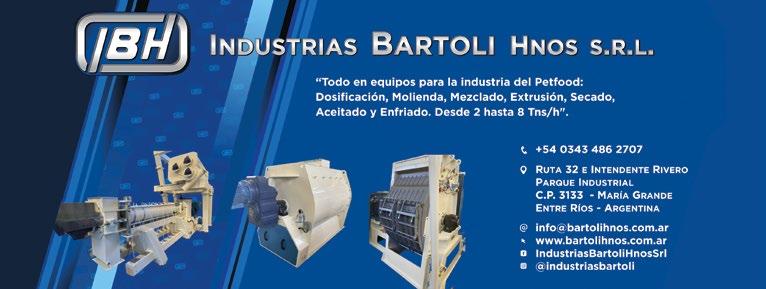
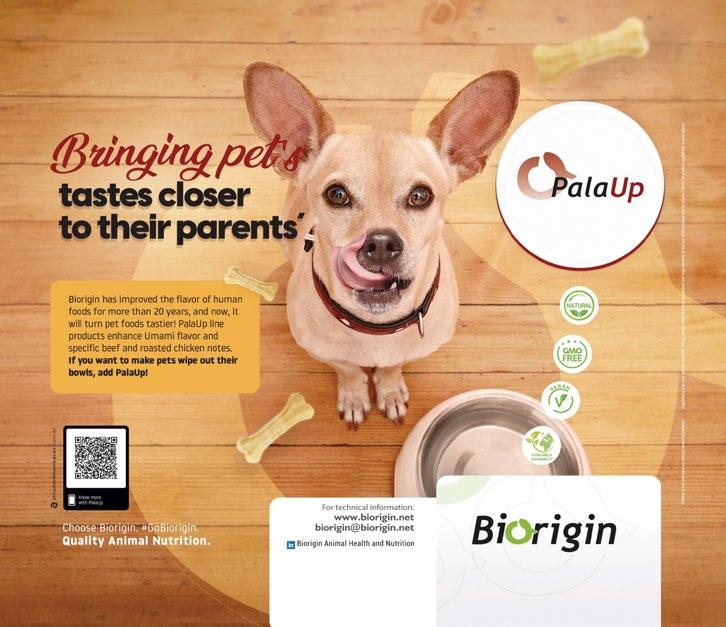


NorthWind Technical Services LLC
+1 7 852 840 080 kastorga@northwindts.com www.northwindts.com
KSE
+31 6 11820906 info@kse.nl www.ksegroup.com/es
Microanalitica Argentina SRL
+54 9 11 5563 4137 microanalitica@microanalitica.com.ar microanalitica.com.ar

Clivio Solutions
+54 9 2352 468227
info@cliviosolutions.com www.cliviosolutions.com
Market Consulting
Triple Three International
+521 552 187 4357 ifranco@triplethreeinternational.com www.triplethreeinternational.com
Nutrition / Additives

Kemin
Tel.: +55 19 3881-5700 guilherme.fray@kemin.com www.kemin.com
JRS


Tel.: +49 7967 152 663 sandra.kupfer@jrs.de www.jrspetfood.com
3A BIOTECH SL
+34 968 839 004 info@tres-a.net www.tres-a.com
Nutrition / Ingredients
APC
+55 11 93472-2145 marcos.razze@apcproteins.com apcpet.com/la
Nutrition / Immunity
Biorigin
+55 14 3269 9200 biorigin@biorigin.net www.biorigin.net

TEBRIO
+34 923 048 049 contact@tebrio.com www.tebrio.com
Nutrition/ Gut health
Biorigin
+55 14 3269 9200 biorigin@biorigin.net www.biorigin.net
AFB International +54 11 4 894 8570 argentina@a international.com a international.com/
Callizo Aromas
+57 305 814 9448 info@callizoaromas.com www.callizoaromas.com
Kemin

Tel.: +55 19 3881-5700 guilherme.fray@kemin.com www.kemin.com
Symrise Pet Food
+55 19 99751 3565 pedro.bermudes@symrise.com www.symrise.com
Nutrition/Supplements


Setop Group
+56 9 5406 9955 sales@cosal.com www.setop.com
Tecnuar
+54 9 341 3408836 info@tecnuar.ar
Andritz + 52 331 574 9593 niels.bengt@andritz.com www.andritz.com/group-en
Buhler Group

+ 52 722 262 05 12 info@buhlergroup.com https://www.buhlergroup.com/
CPM

+54 (9) 11 5389 5312 idah@cpm.net www.onecpm.com
Extru-Tech
+1 785 284 2153 extru-techinc@extru-techinc.com www.extru-techinc.com
Famsun Group
+86 514 878 48880
mypublic@famsungroup.com www.famsungroup.com
Ferraz
+55 16 3934 1055 vendas@ferrazmaquinas.com.br www.ferrazmaquinas.com.br
Industrias Bartoli Hnos
+54 0343 486 2707 info@bartolihnos.com.ar www.bartolihnos.com.ar
Coperion
+1 816 891 9300 info@coperion.com www.coperion.com/fpm
Wenger Manufacturing, Inc +1 785 284 2133 info@wenger.com wenger.com/
Statec Binder
+43 3112 38580 0 sales@statec-binder.com www.statec-binder.com
PAYPER

+34 973216040 contact@payper.com payper.com
PREMIER TECH + 55 11 4525 1151 (Brasil) +52 81 8008 1050 (México) reie2@premiertech.com www.ptchronos.com
North American Renderers Association
+52 55 59806080
gdavalos@nralatinamerica.org nara.org
PLP Systems
+39 0523 891629
info@plp-systems.com www.plp-systems.com
KSE +31 6 11820906 info@kse.nl www.ksegroup.com/es


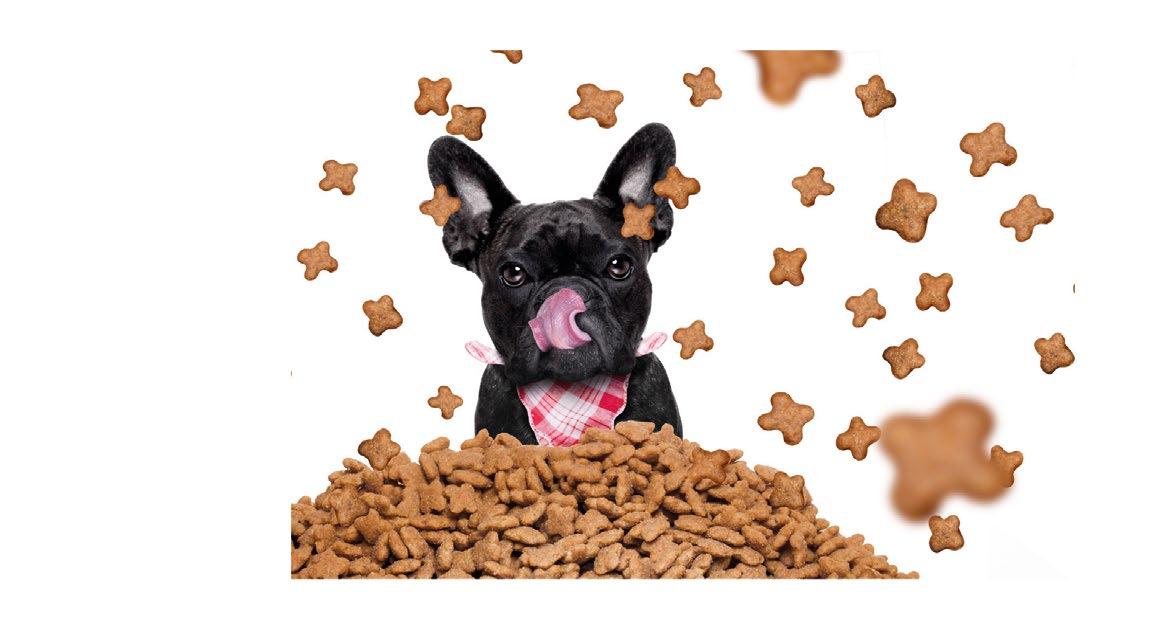
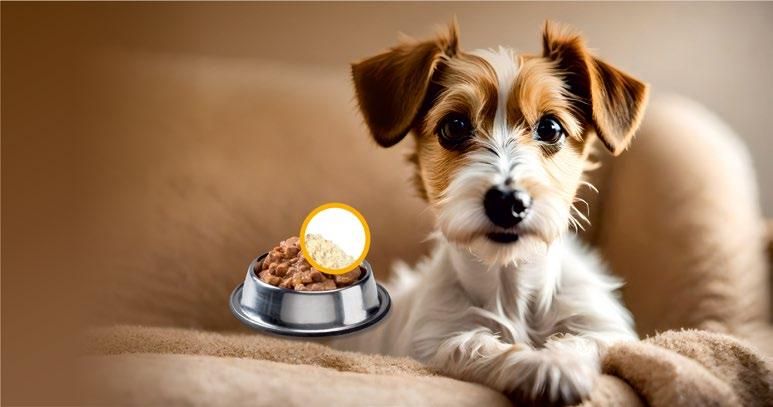

Nourishing the microbiome focused on dogs’ and cats’ health: what are we doing and what needs improvement?
Sessions addressed:
1st: Understanding the gut microbiome
2nd: How does the microbiome impact in dogs’ and cats’ health?
3rd: How can macronutrients modulate the gut microbiome in dogs and cats?
4th: How can additives modulate the gut microbiome in dogs and cats?

Confirmed speaker Jan Suchodolski Texas A&M University




Curitiba - PR - Brazil
July 29th and 30th 2024


